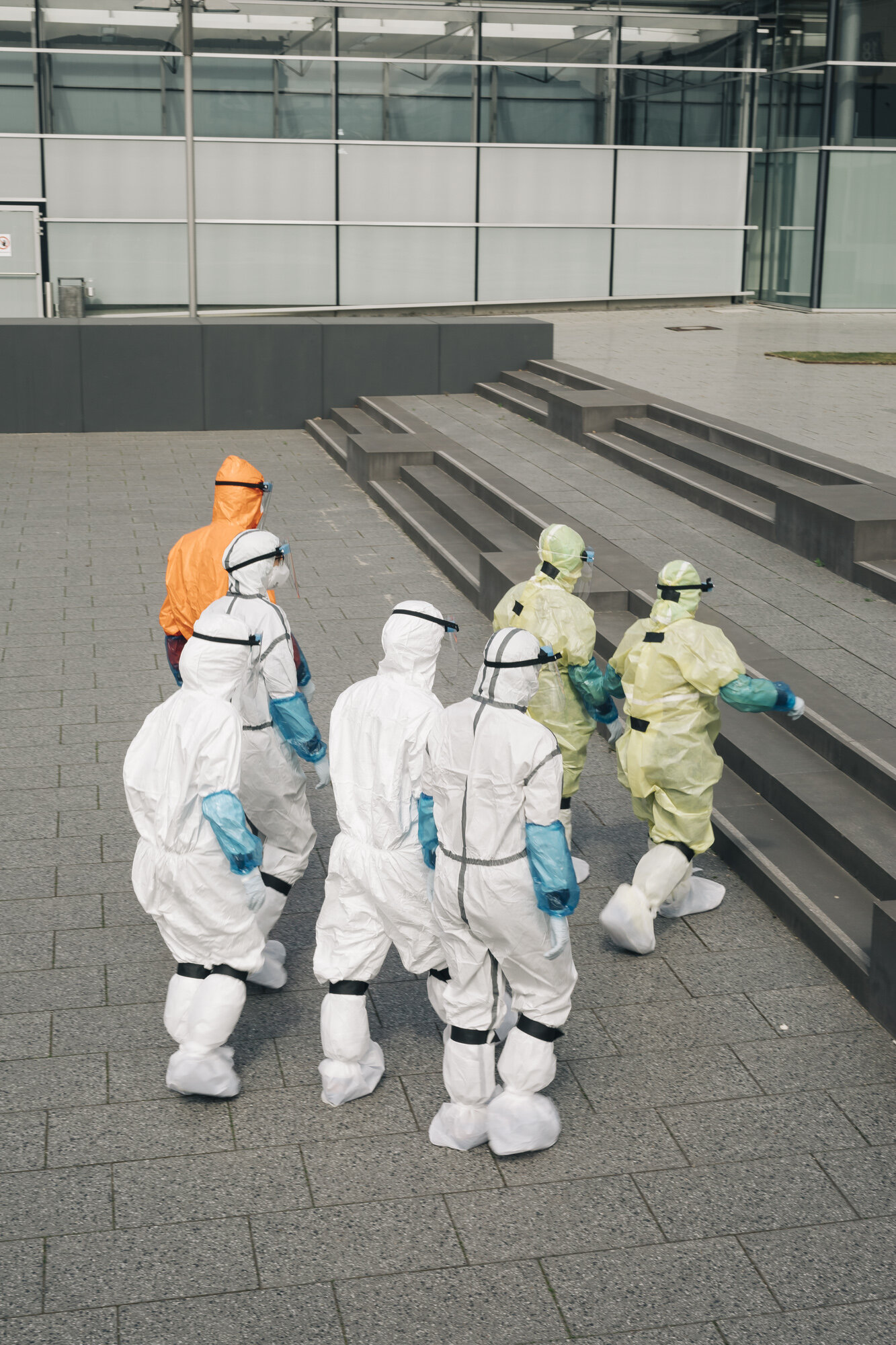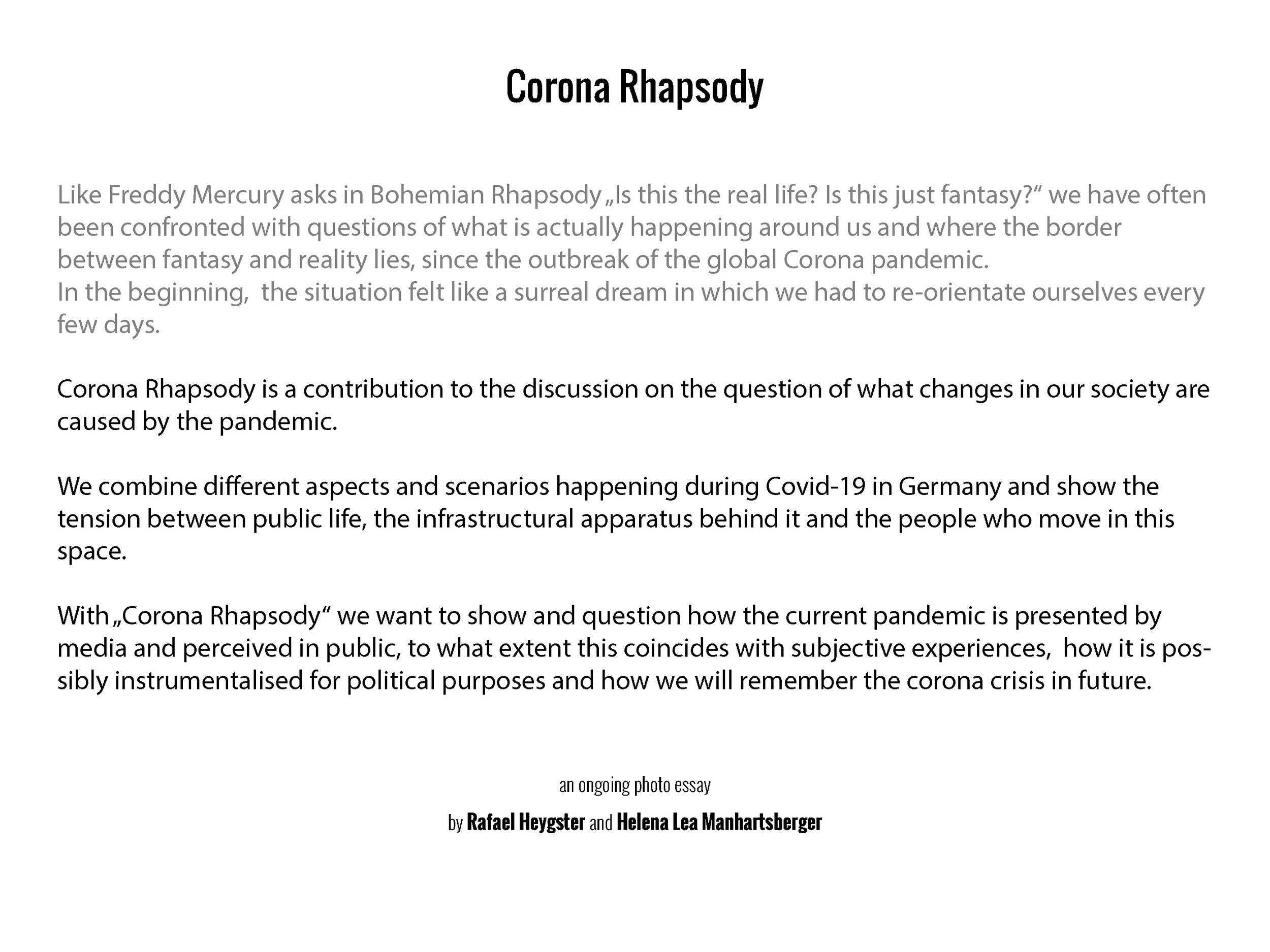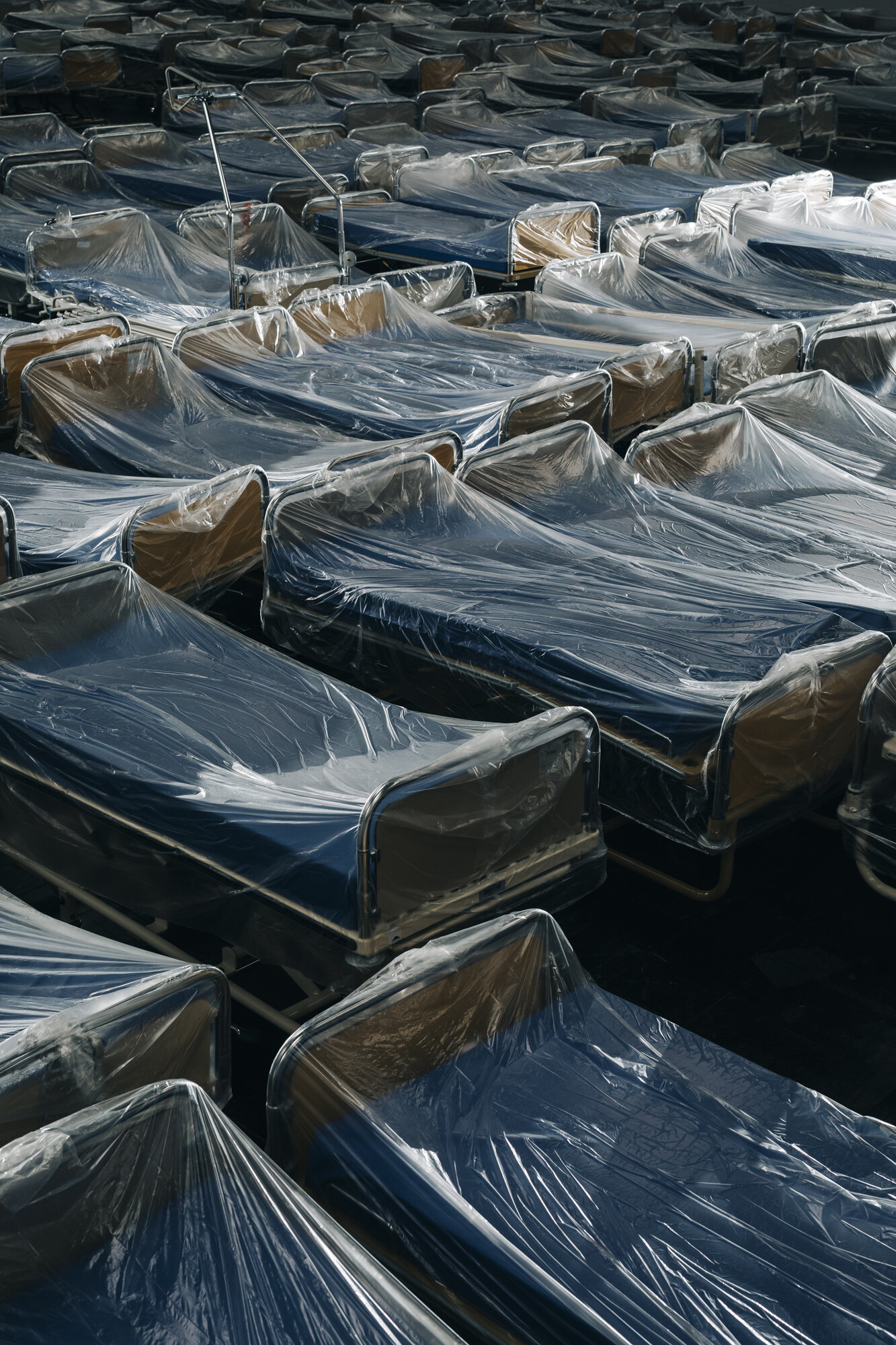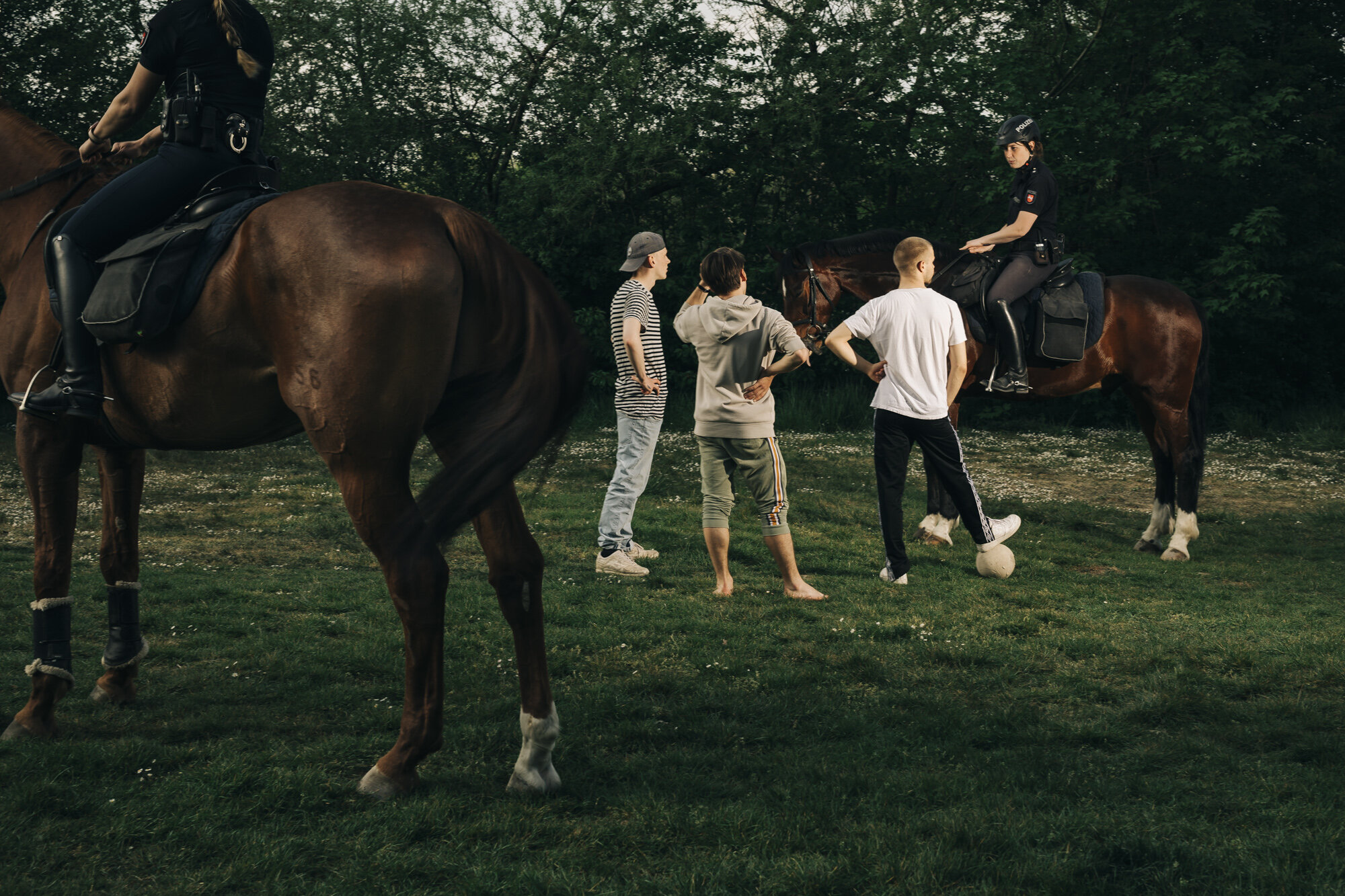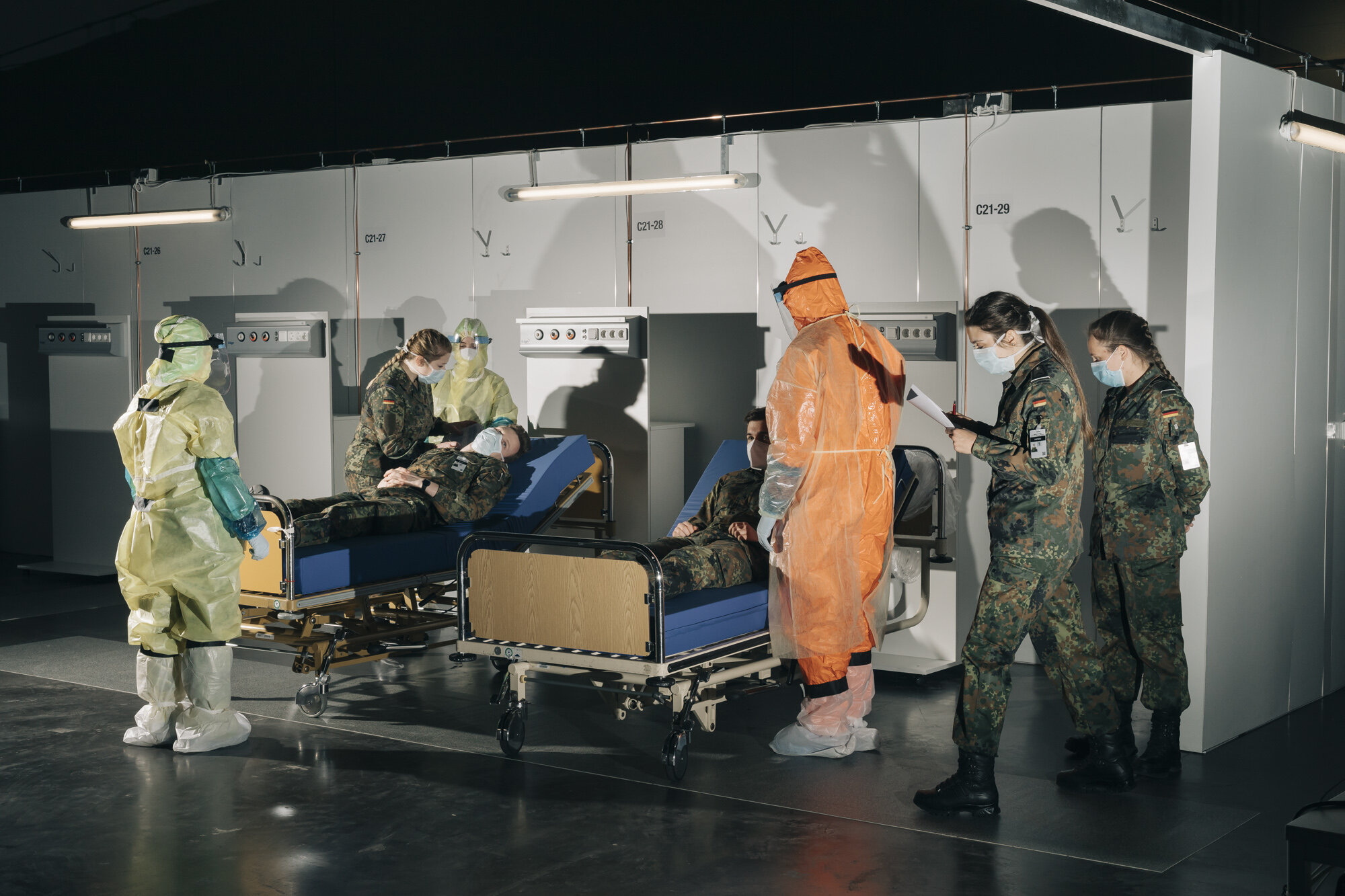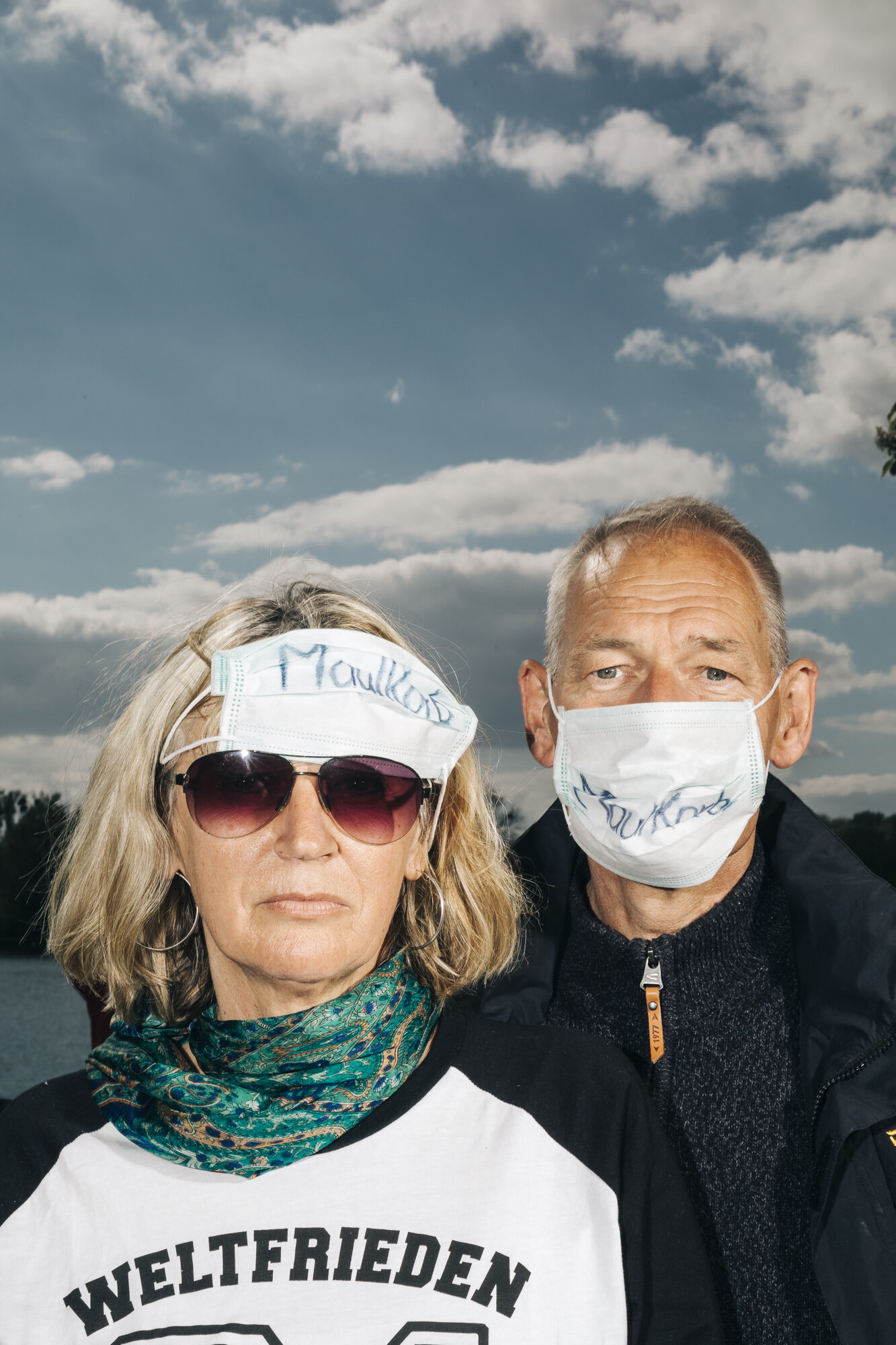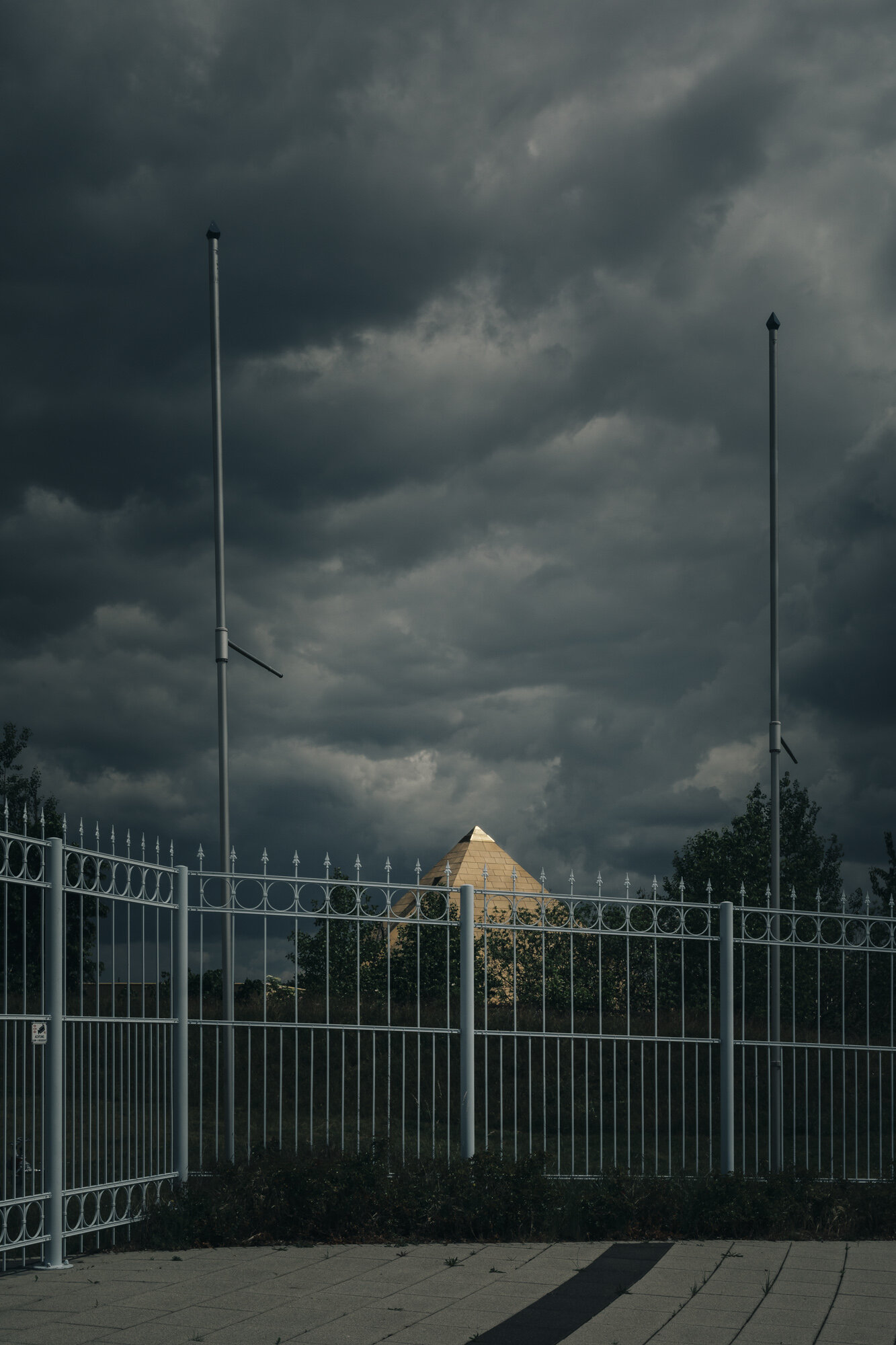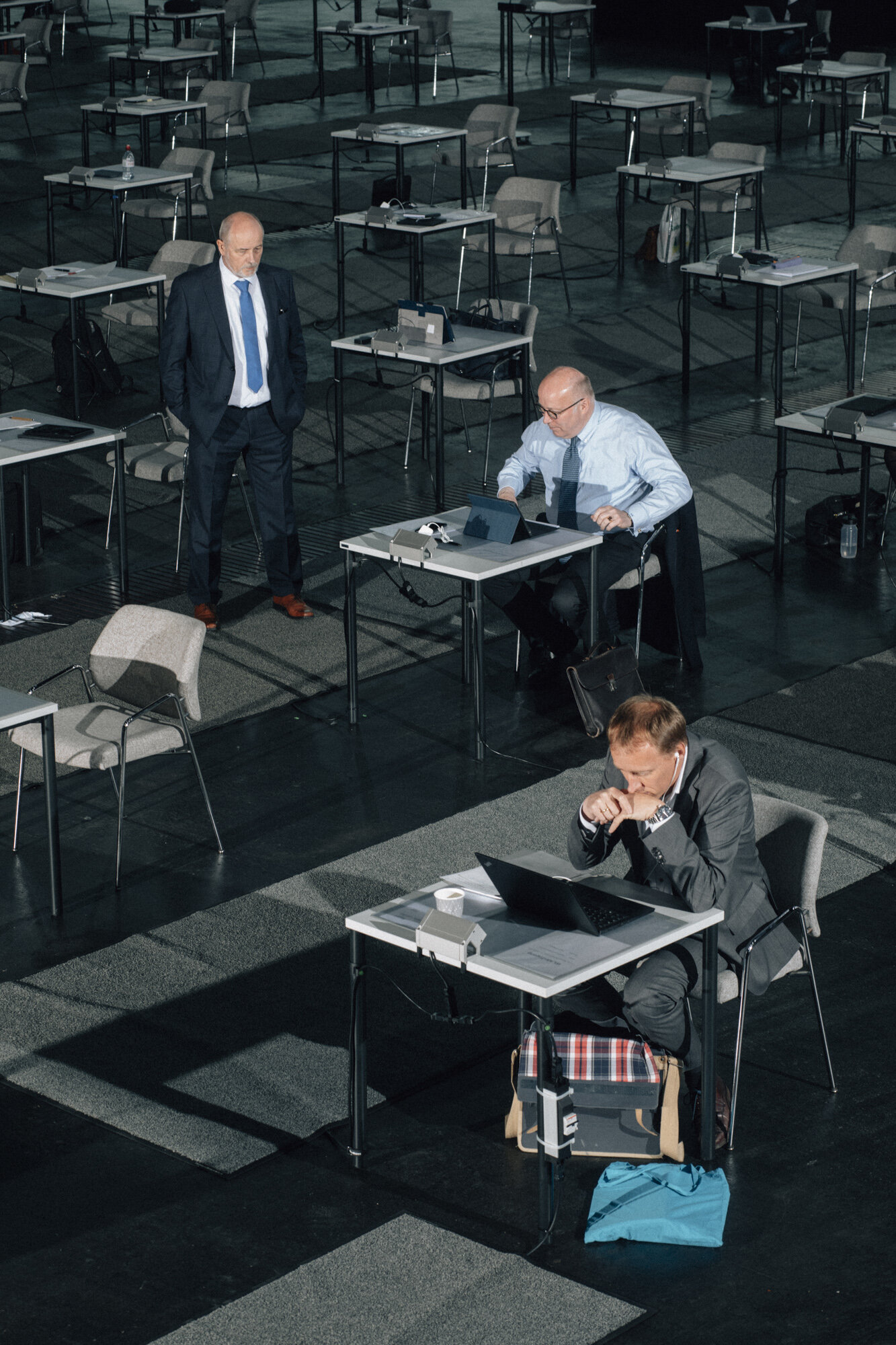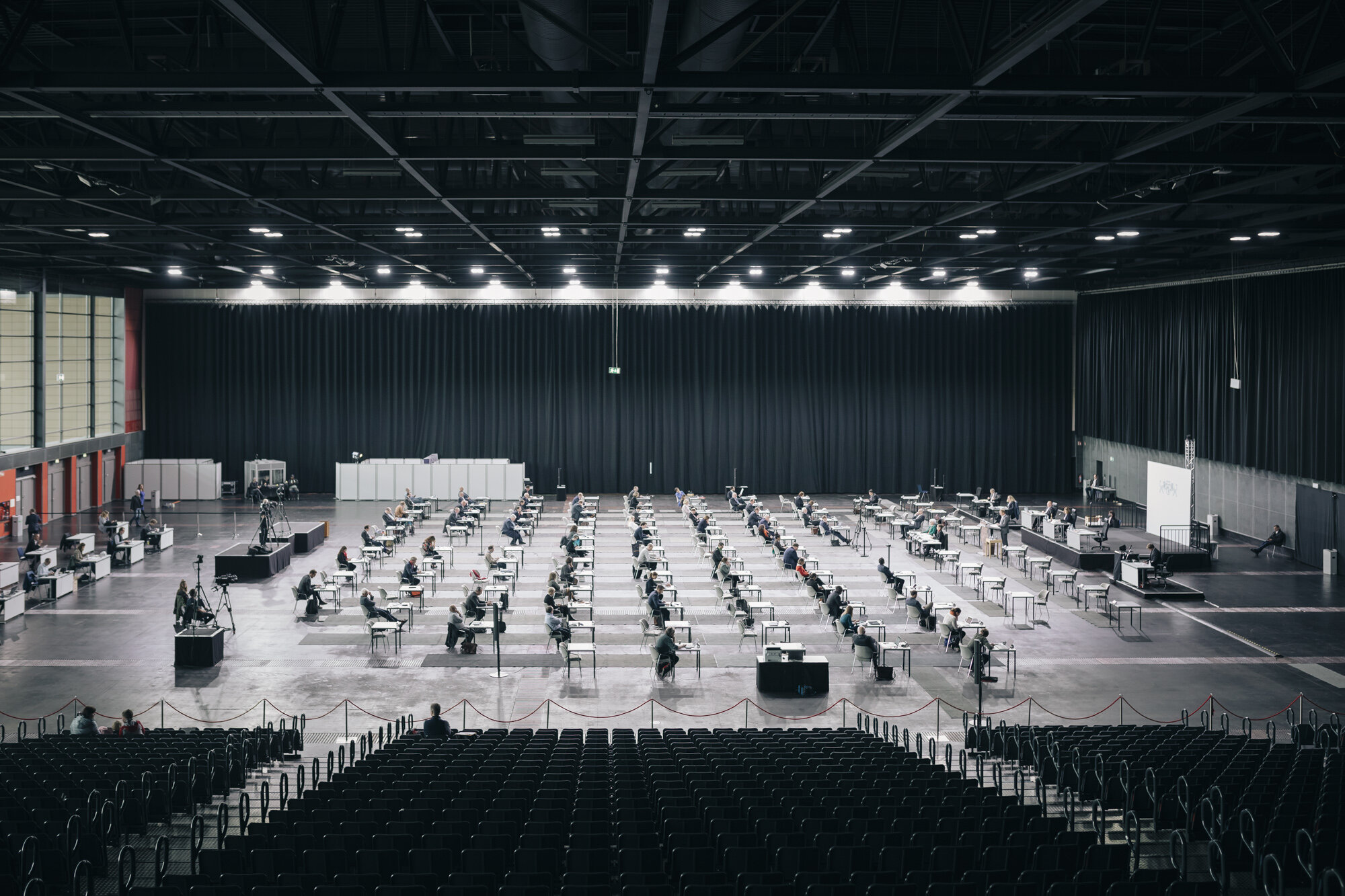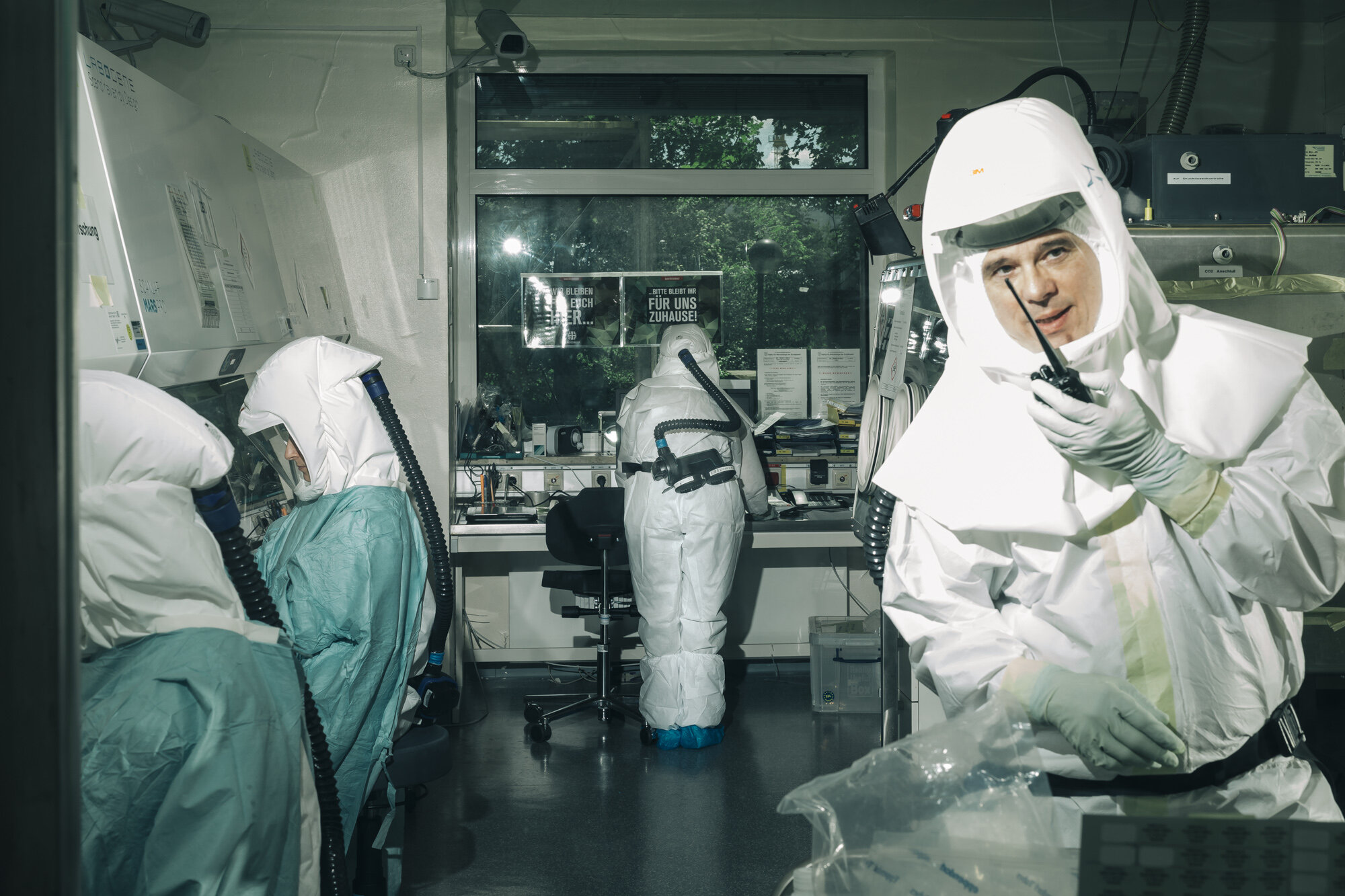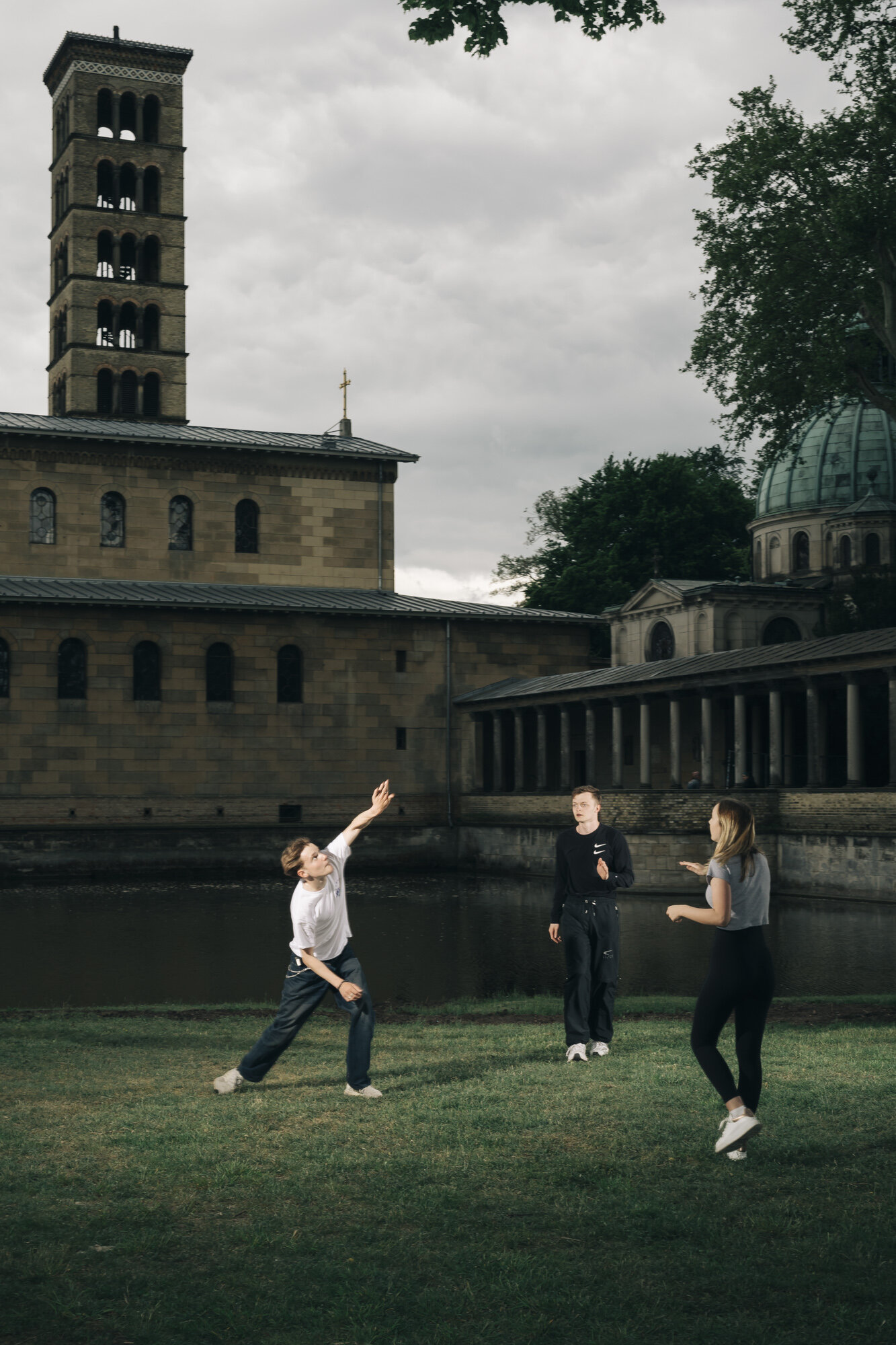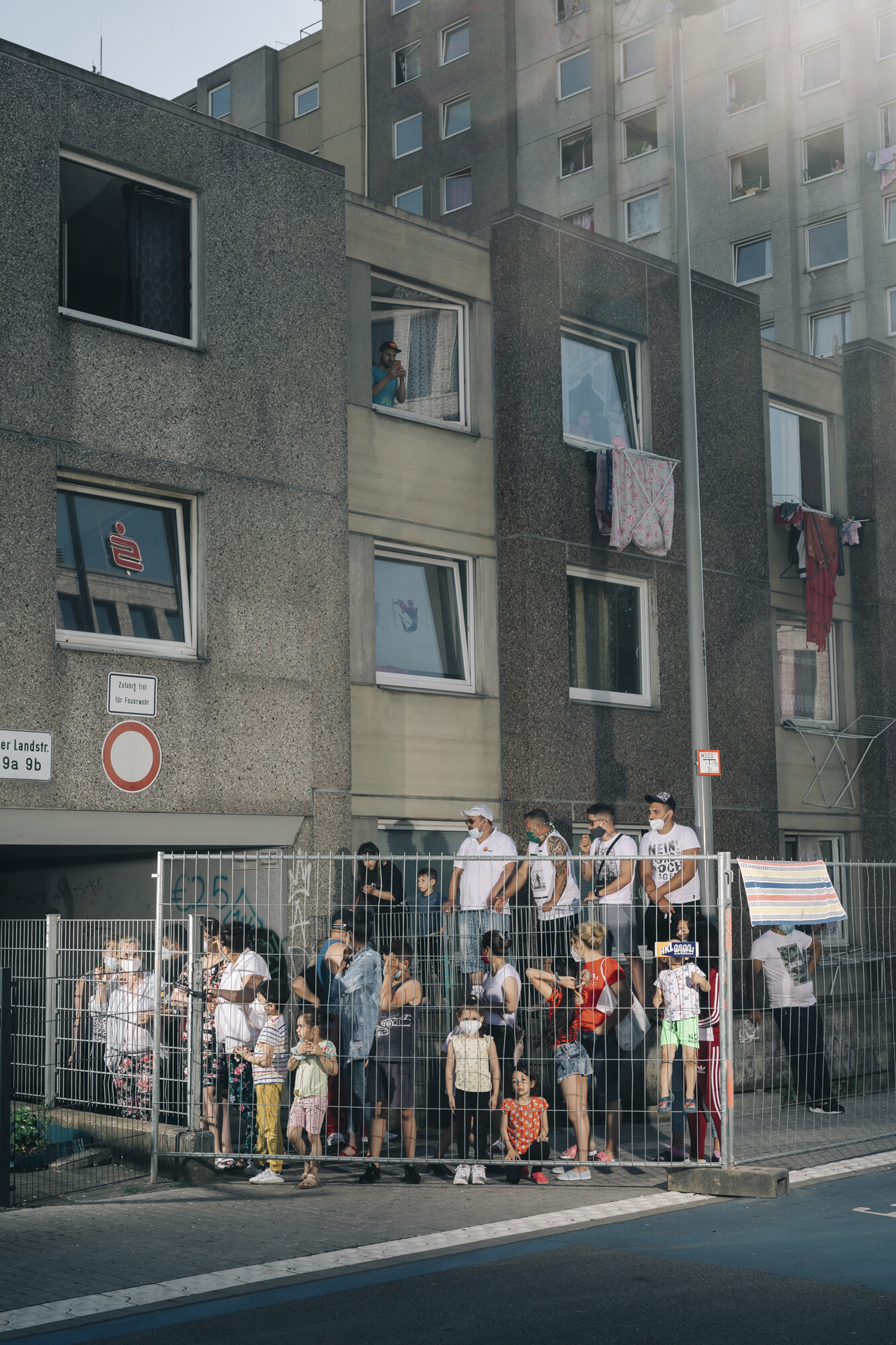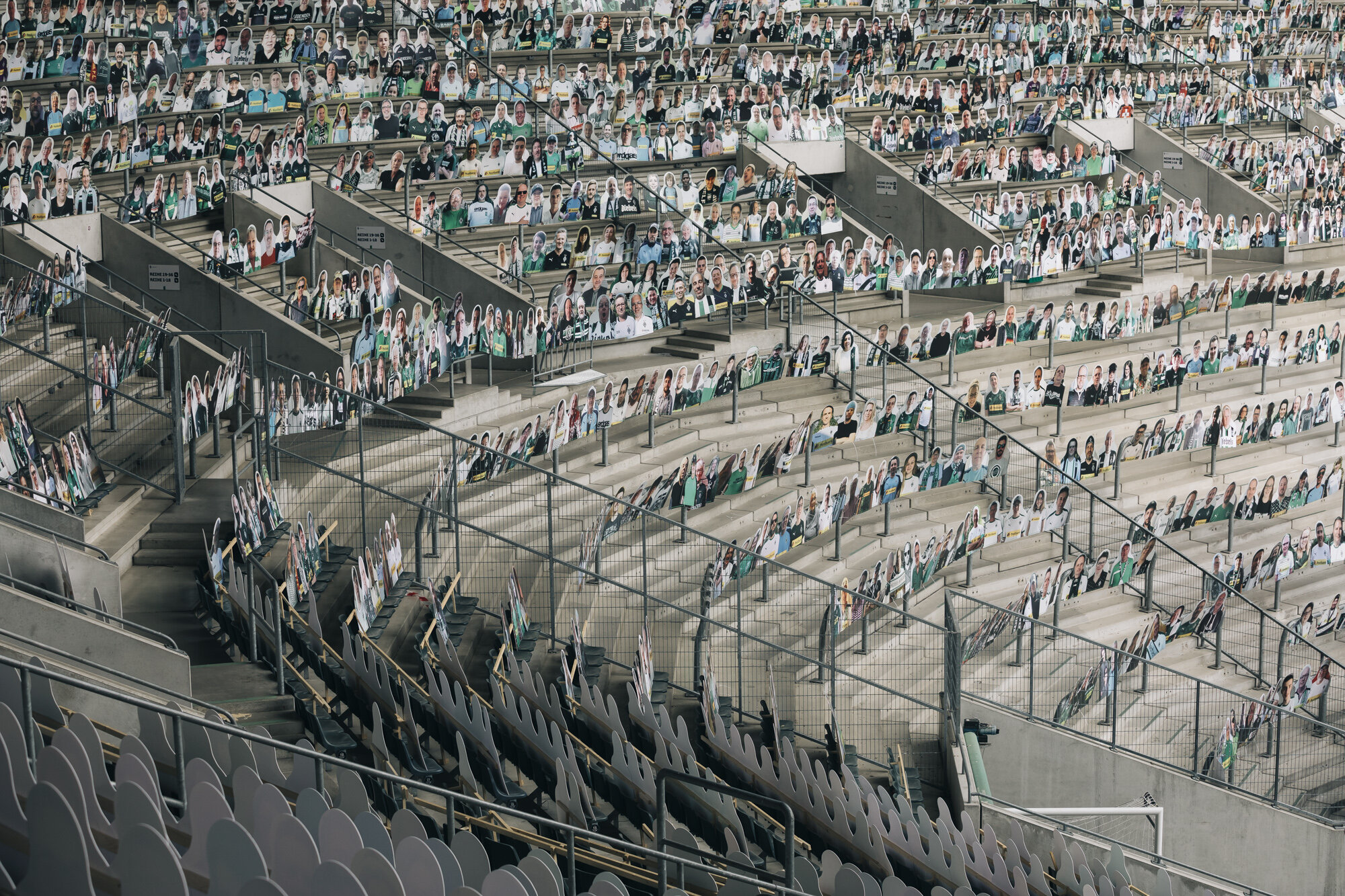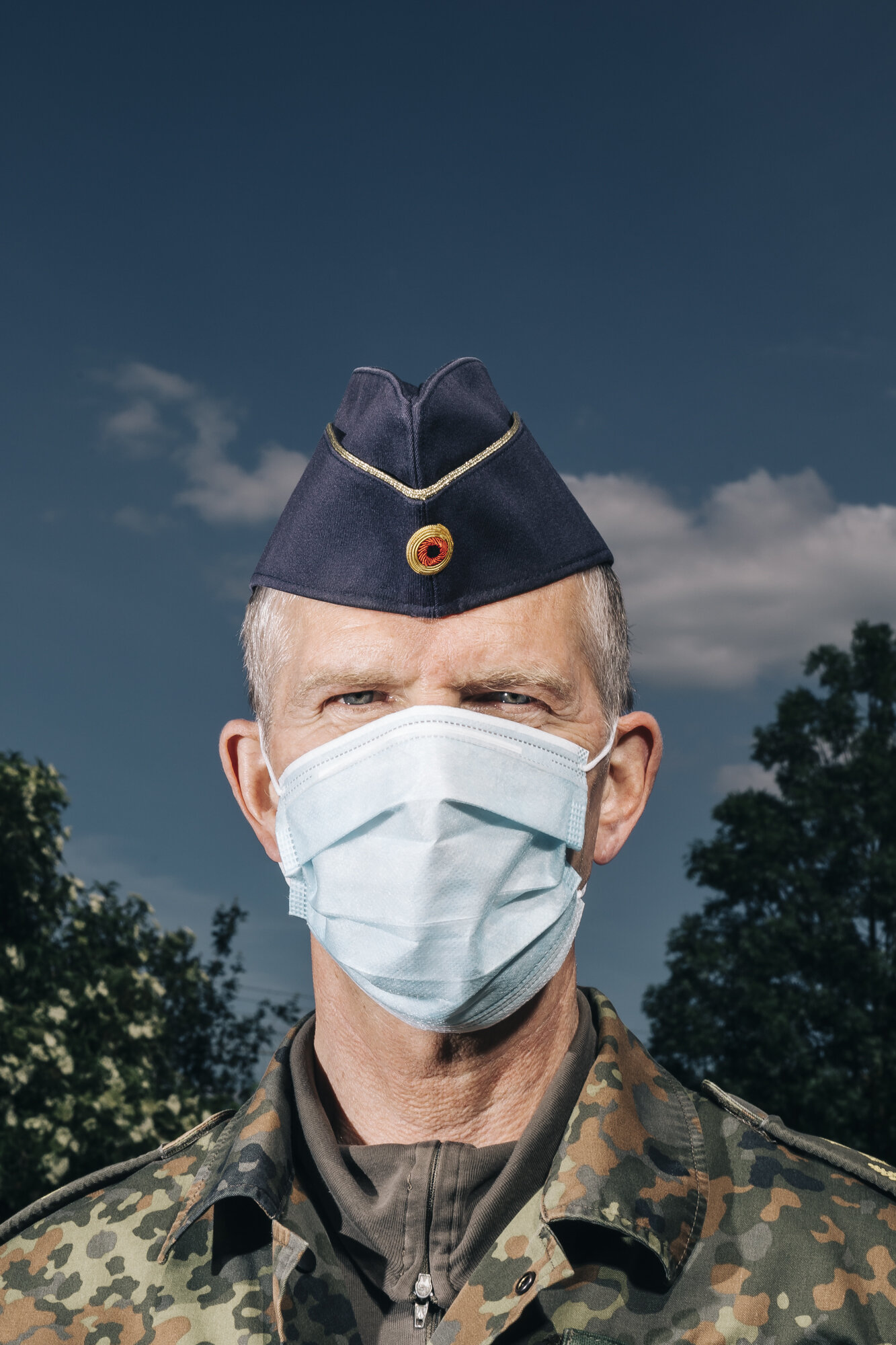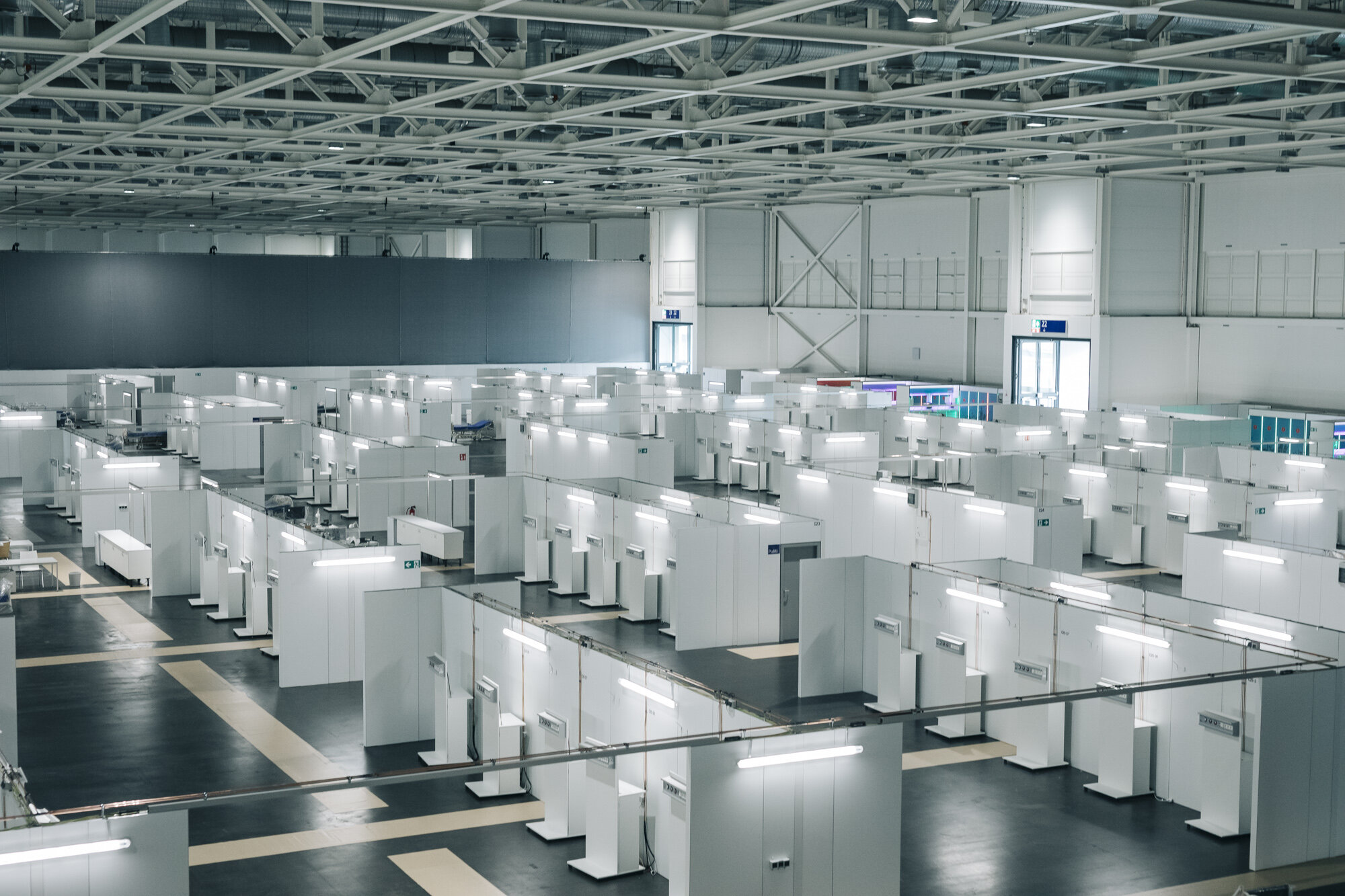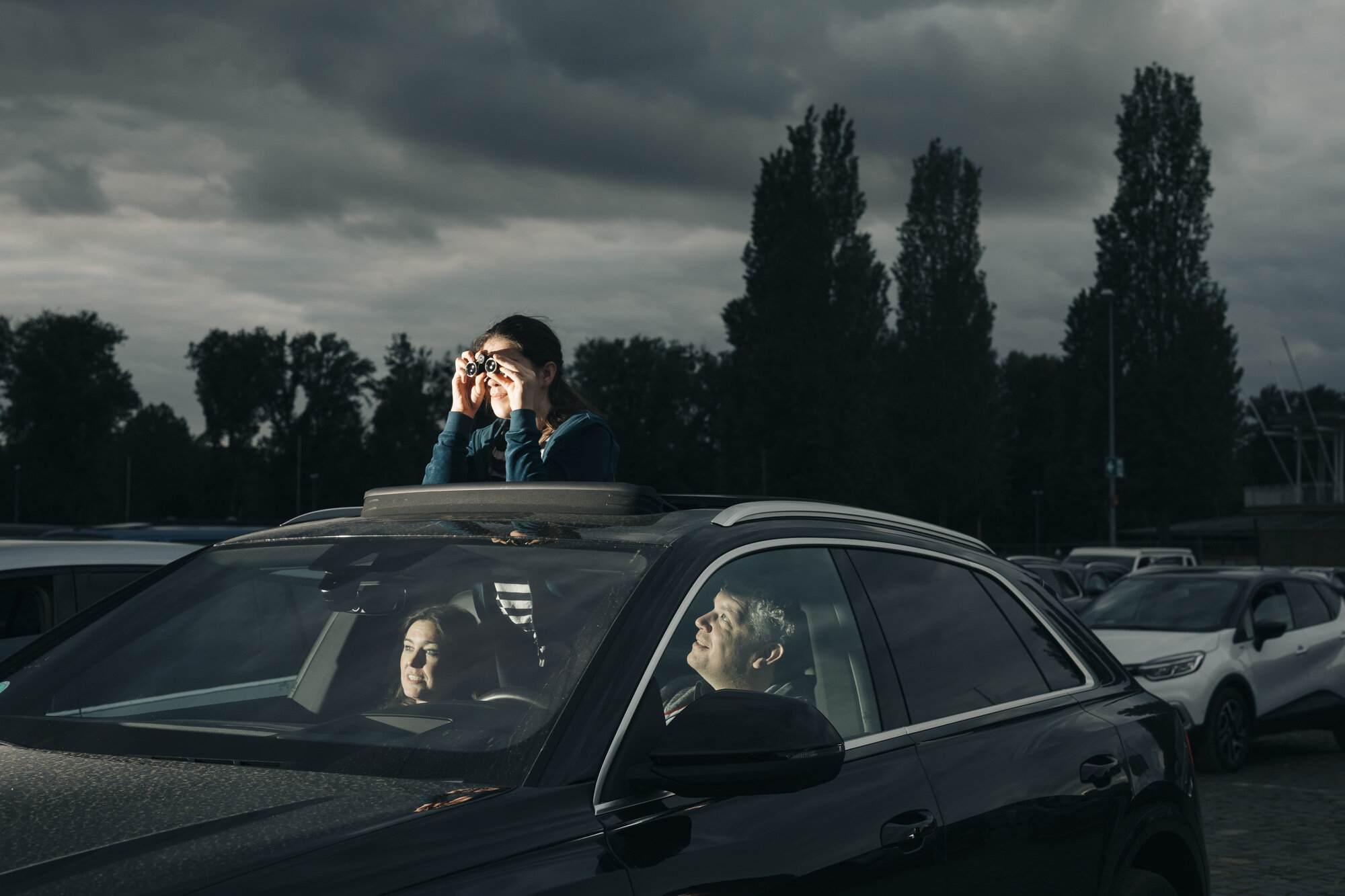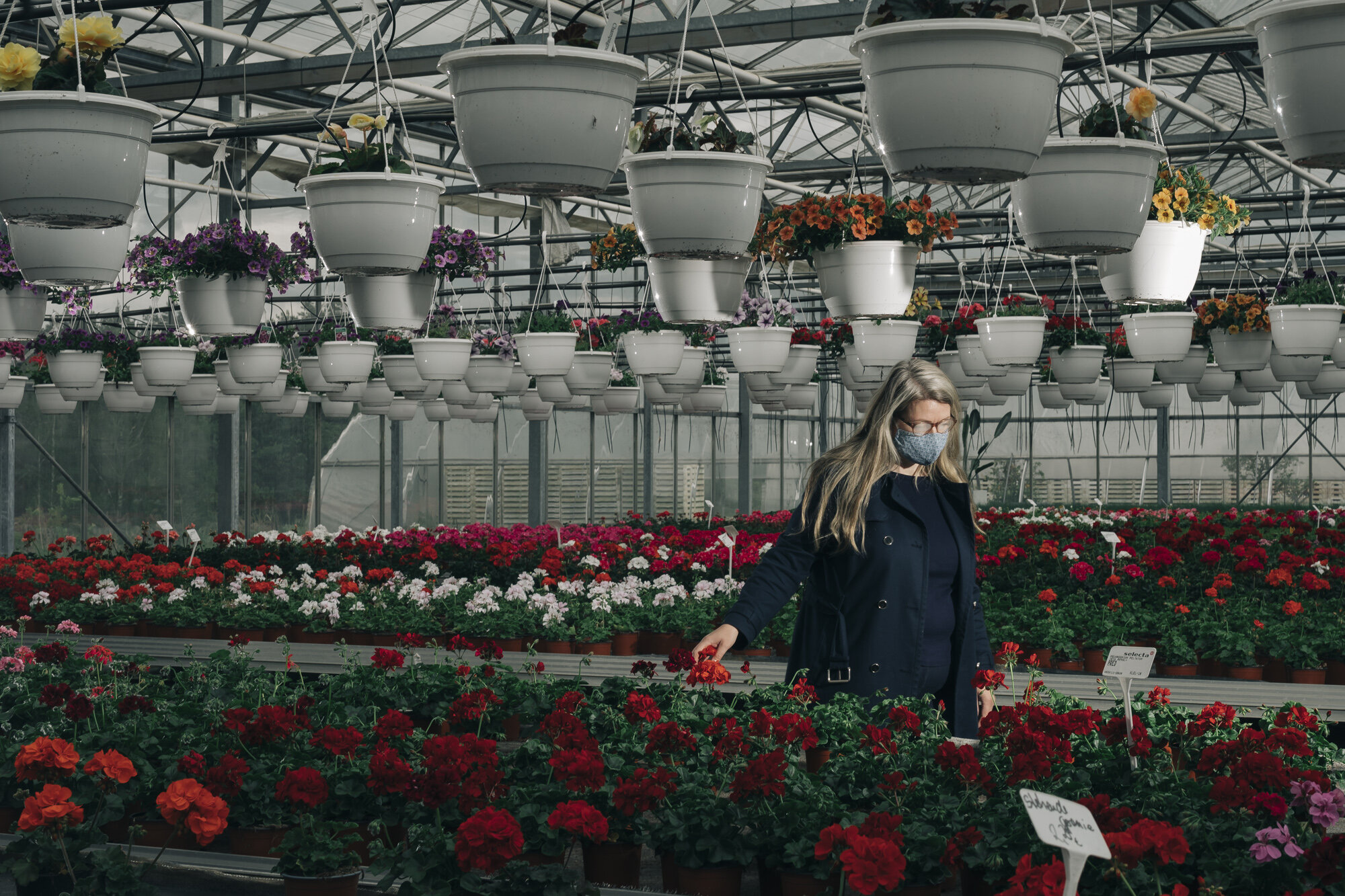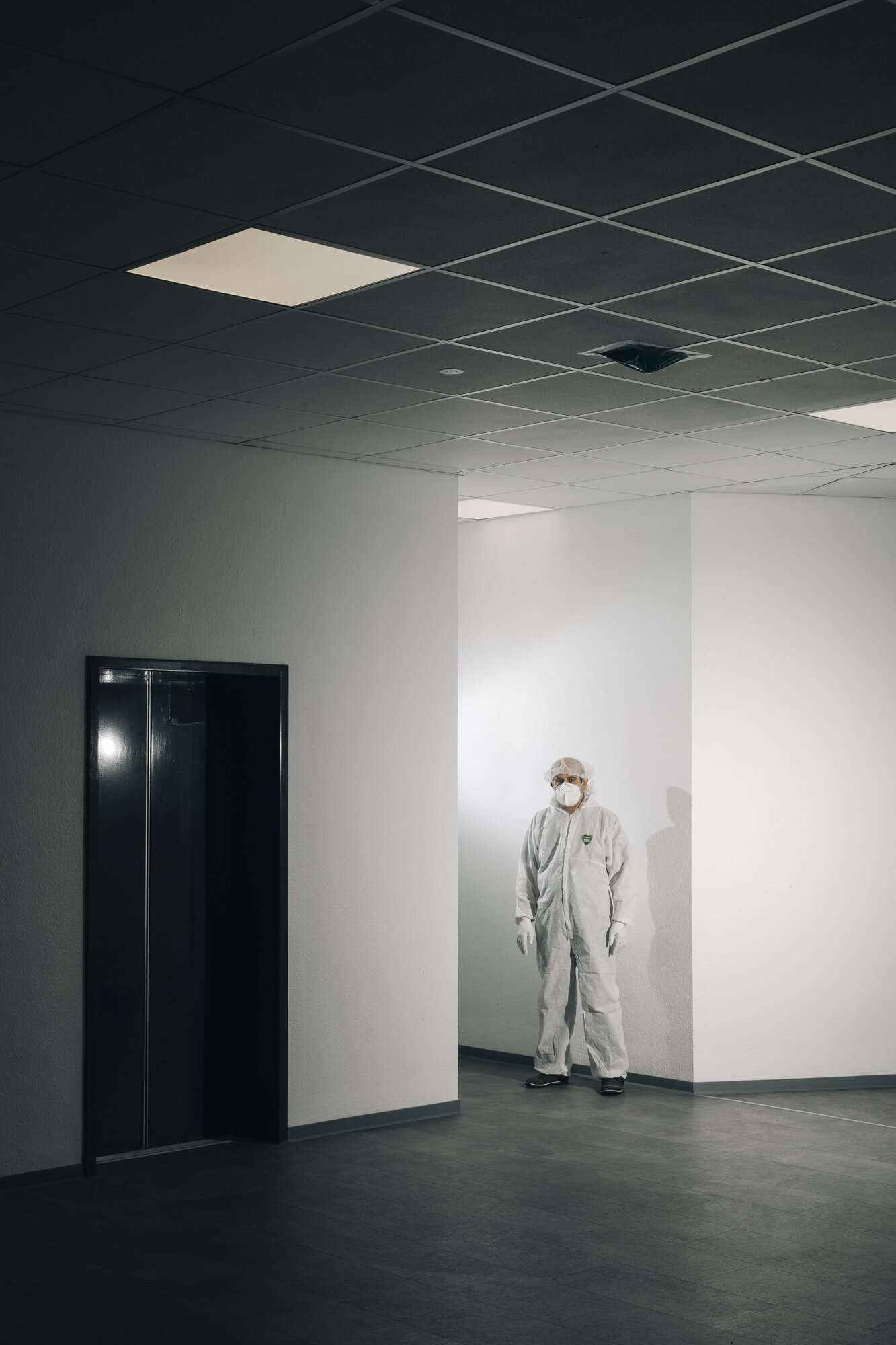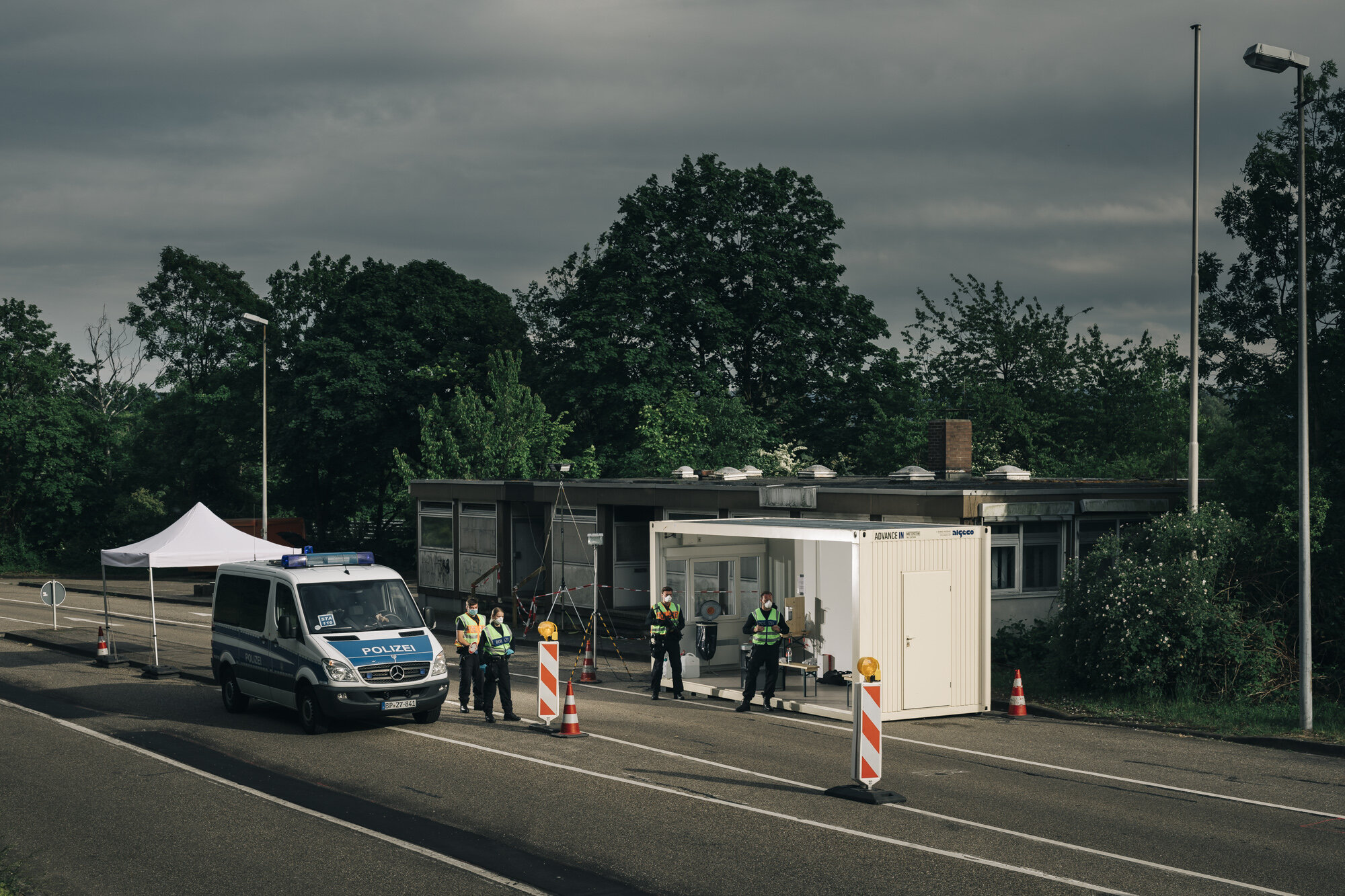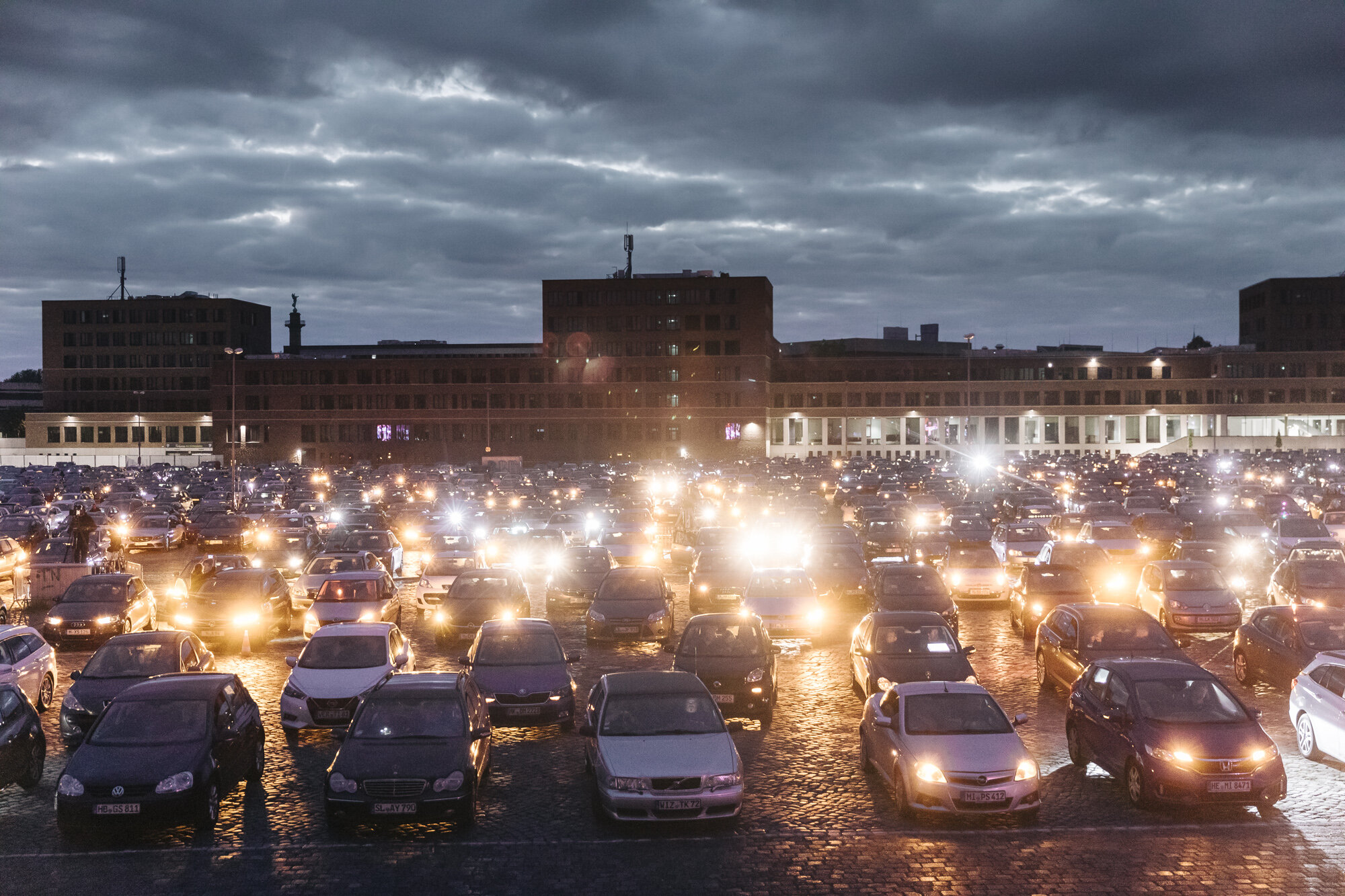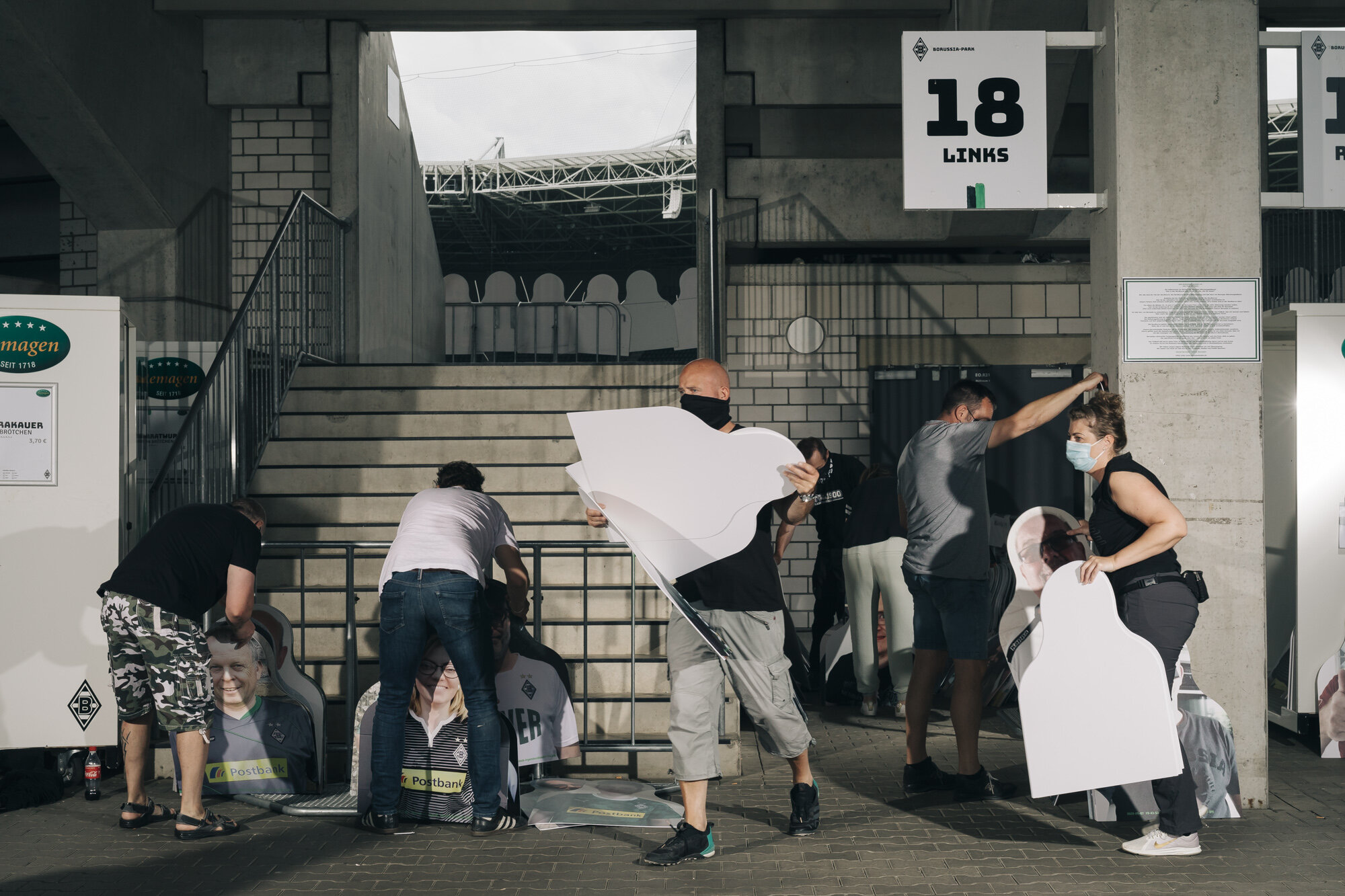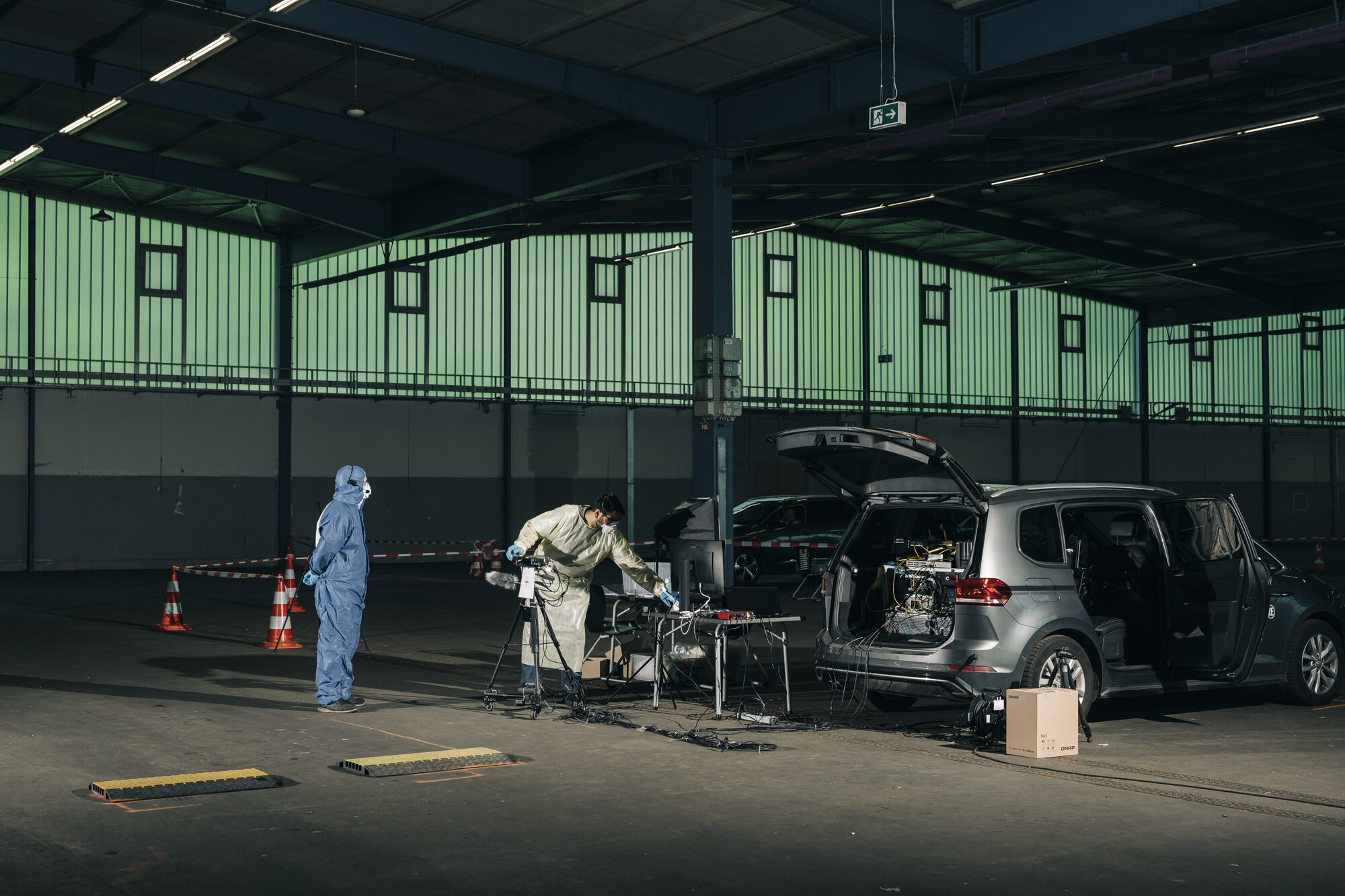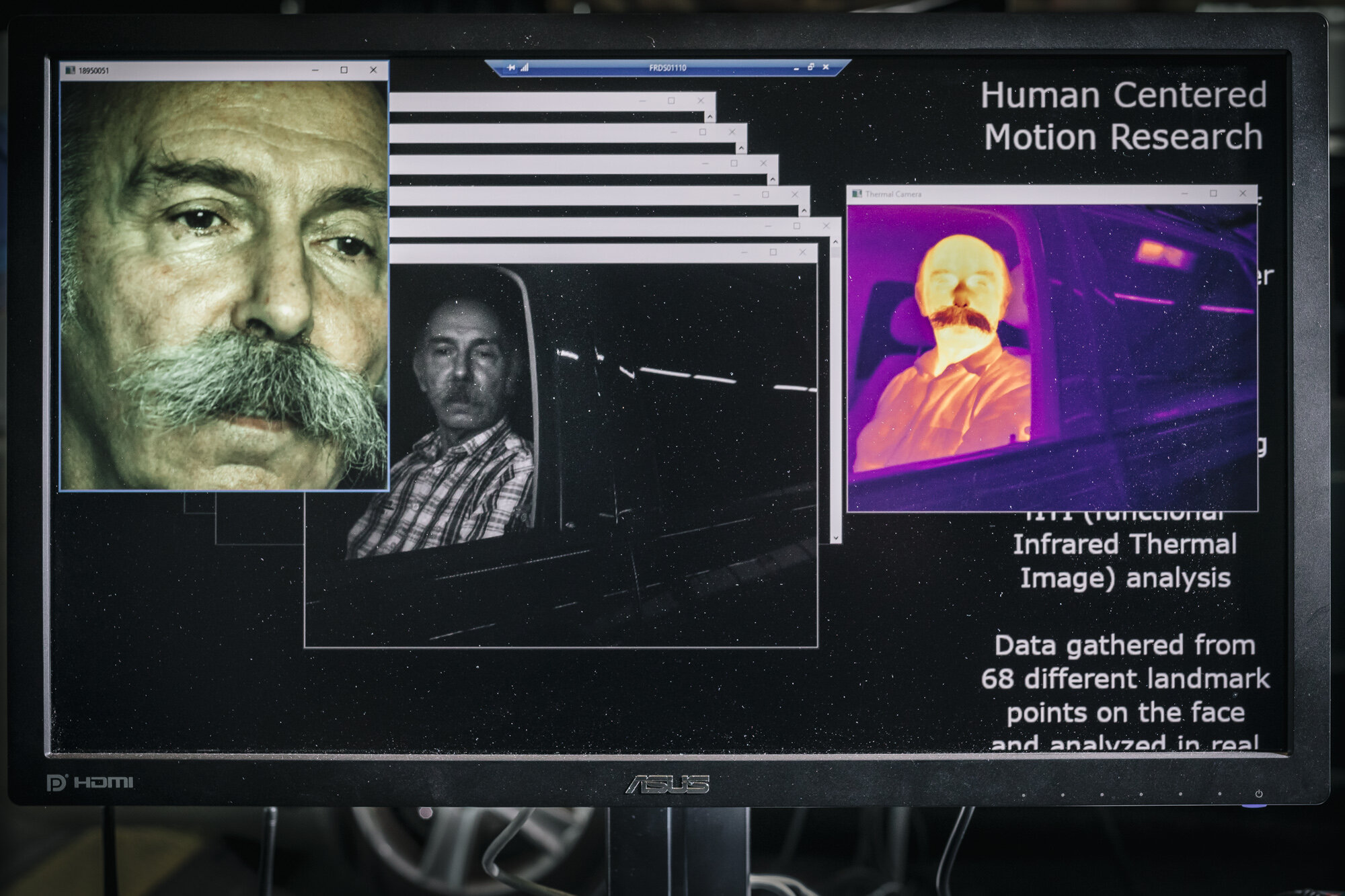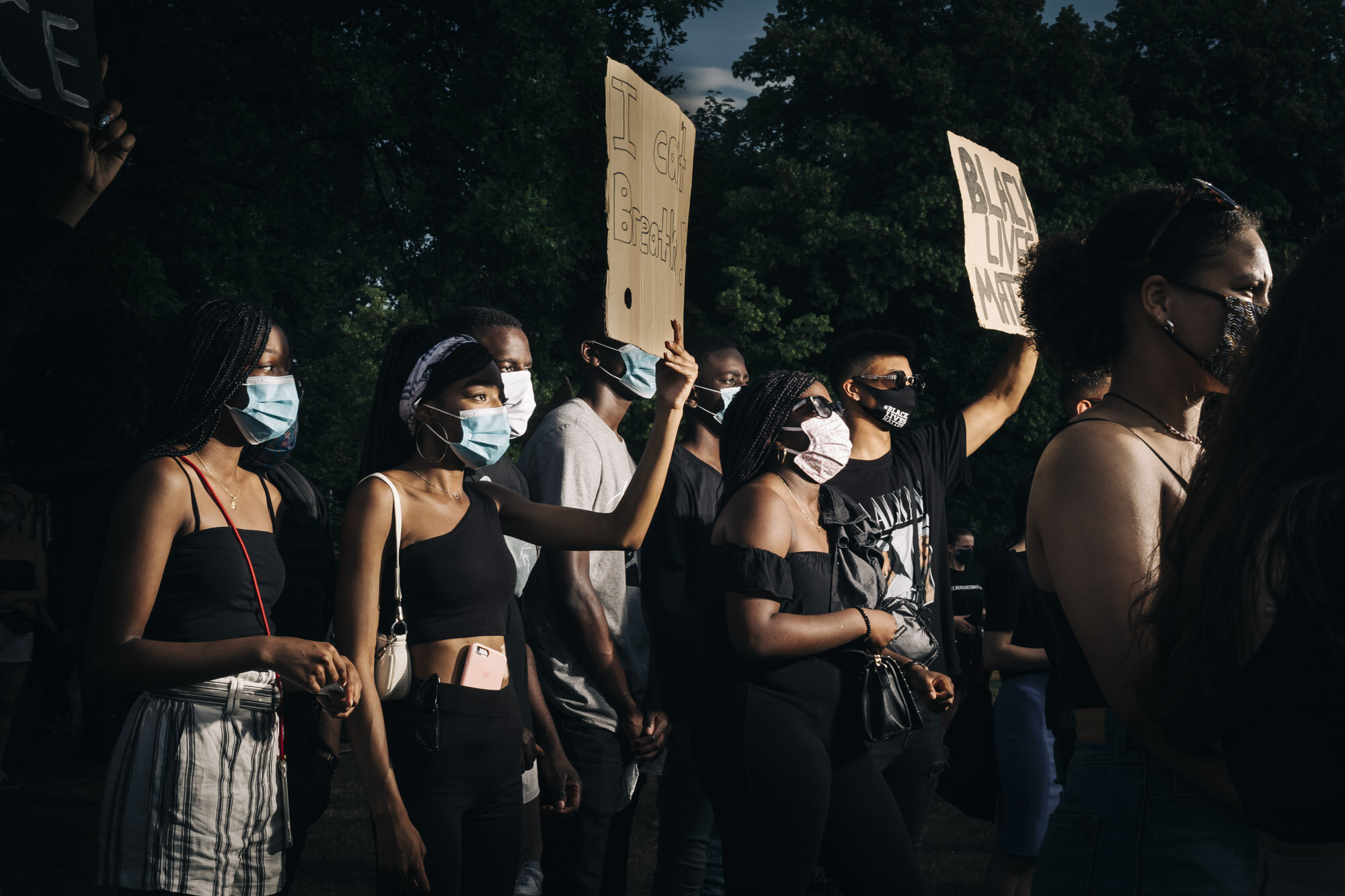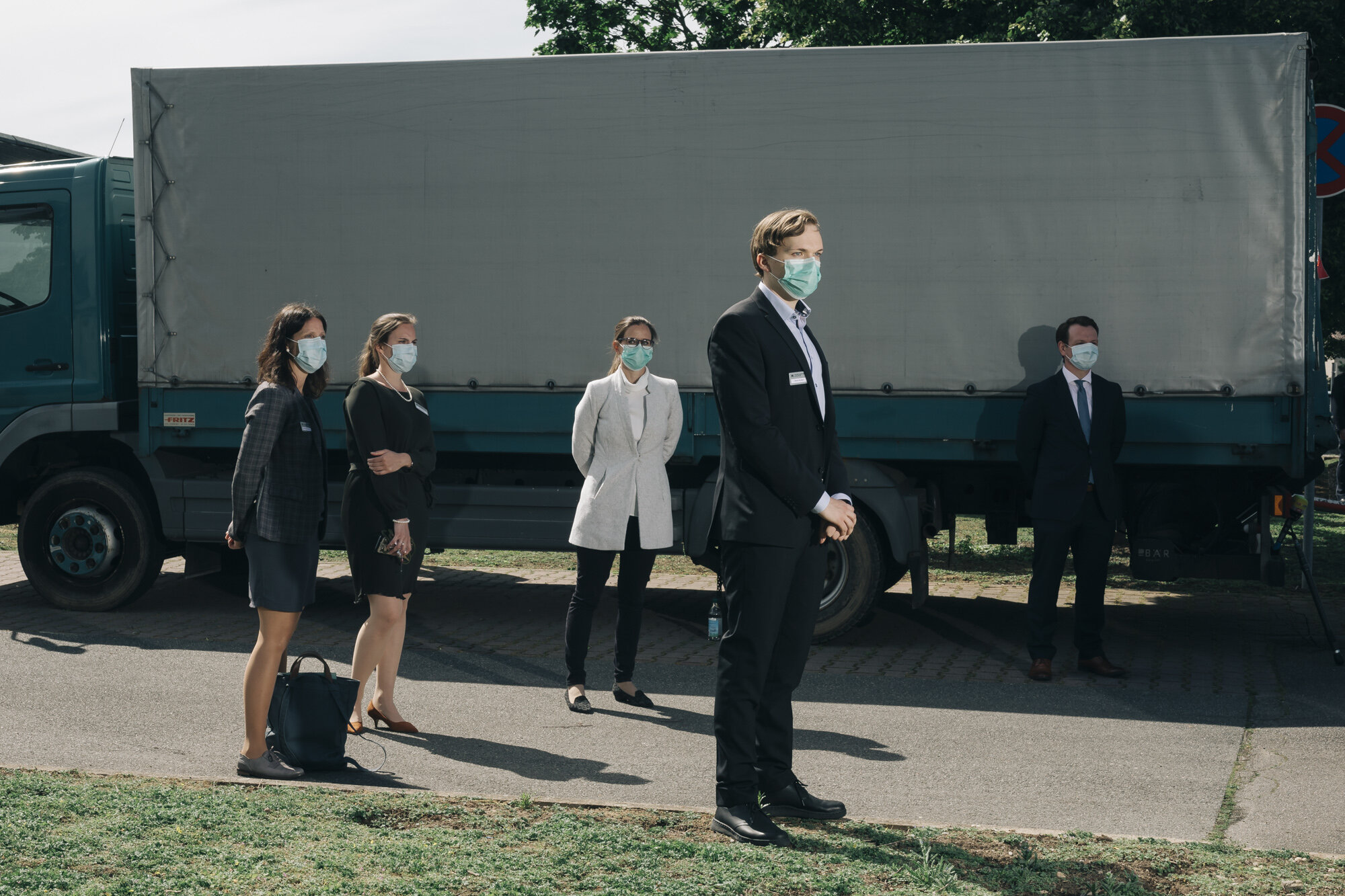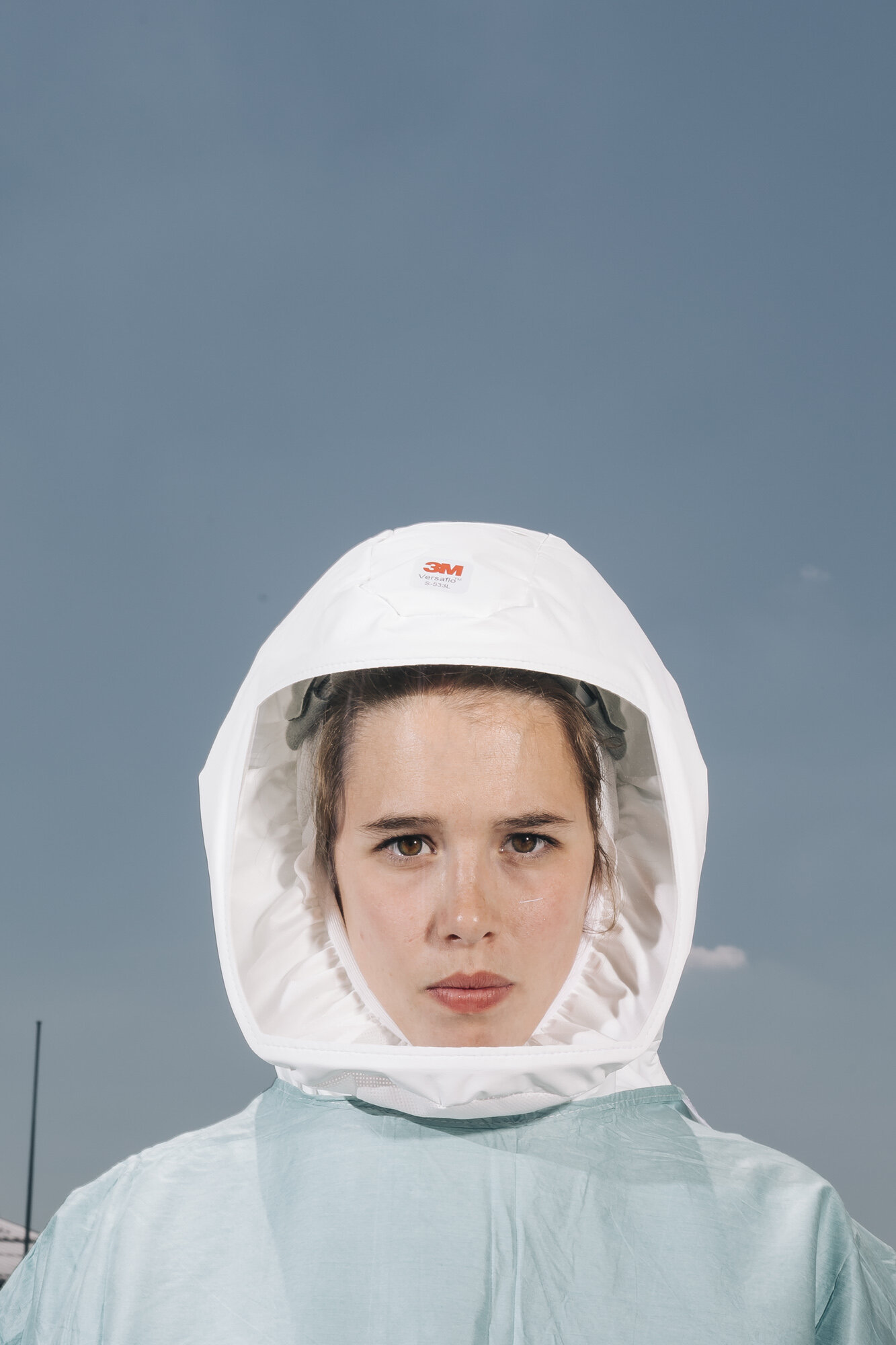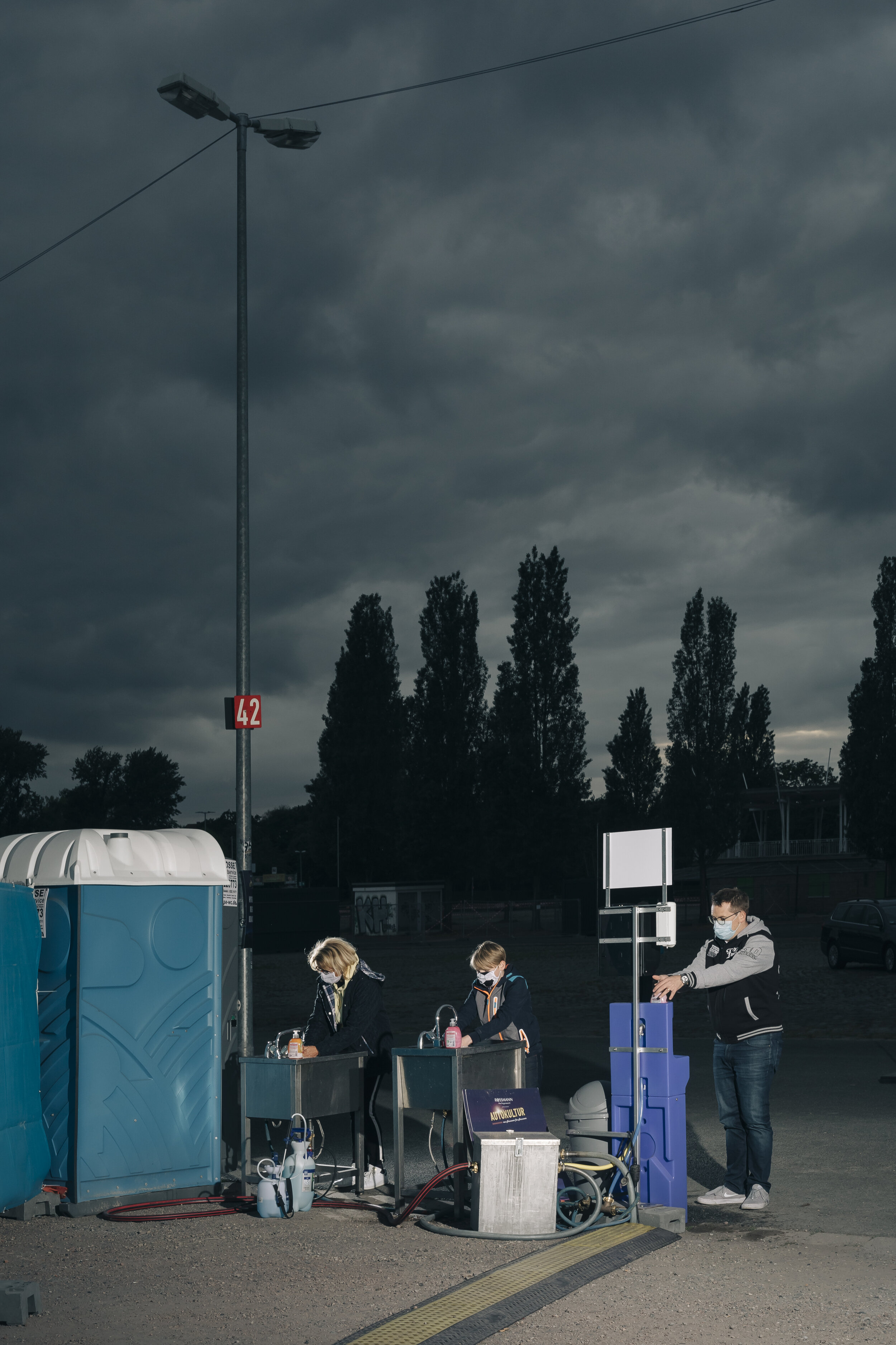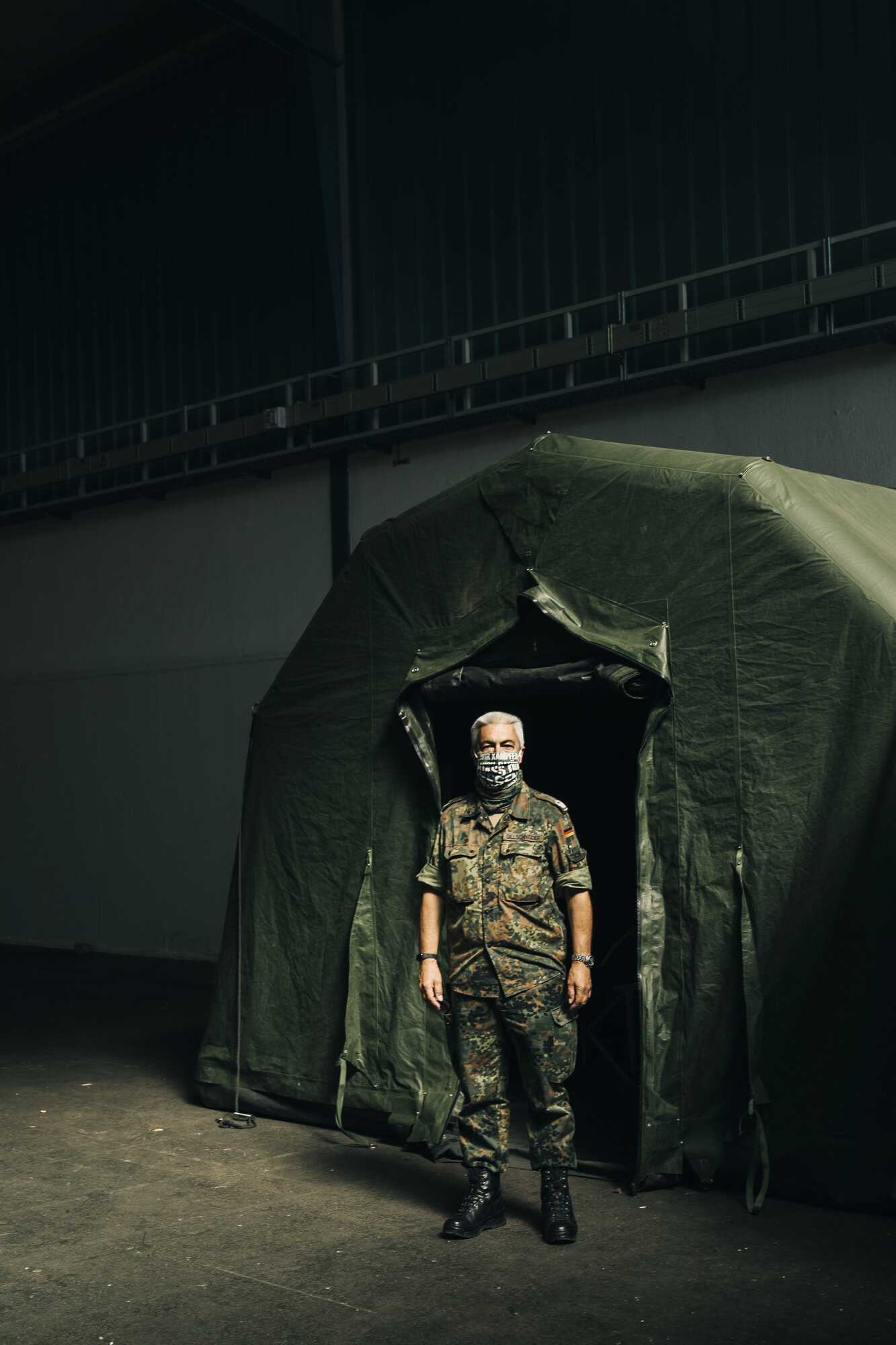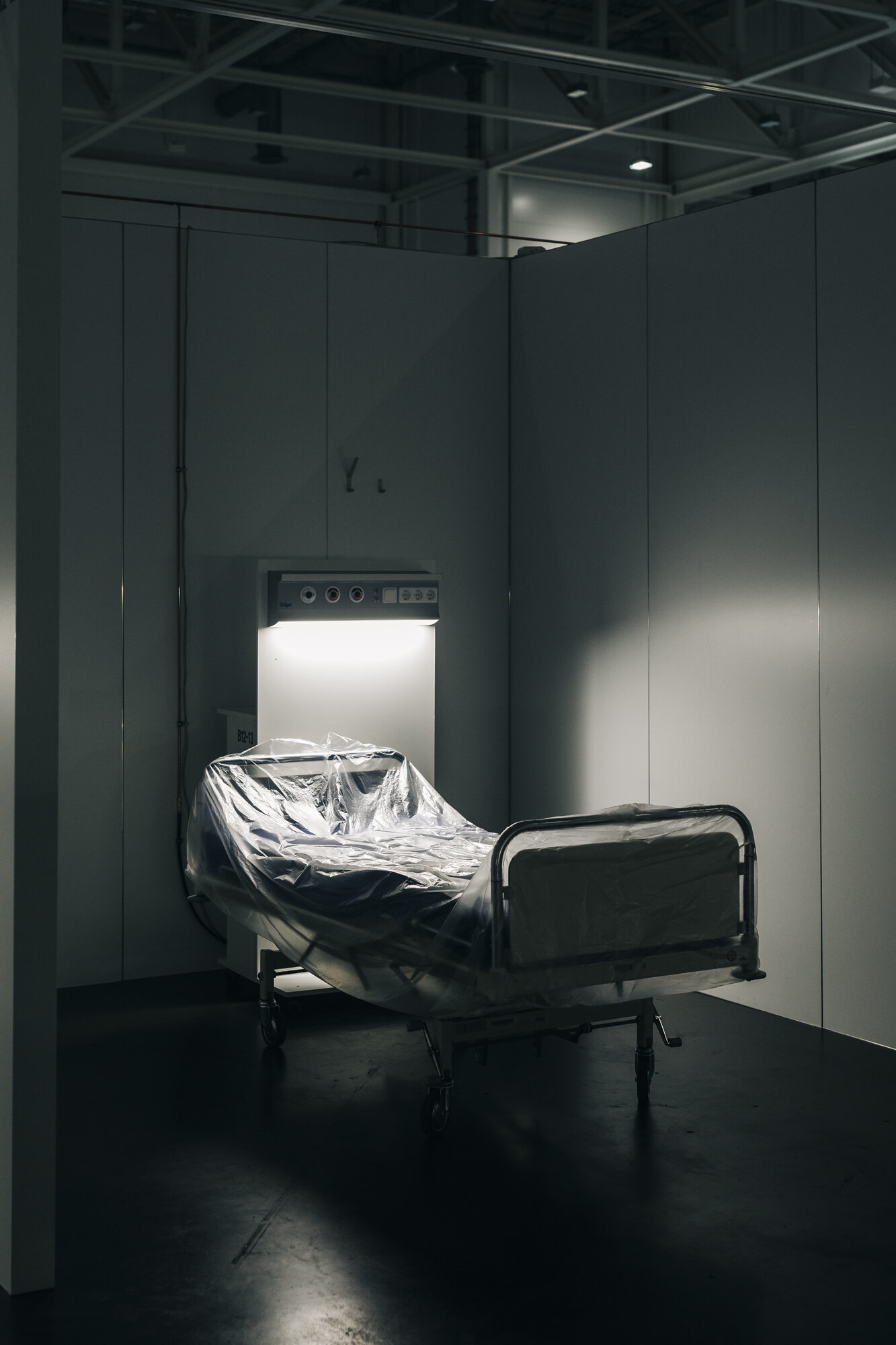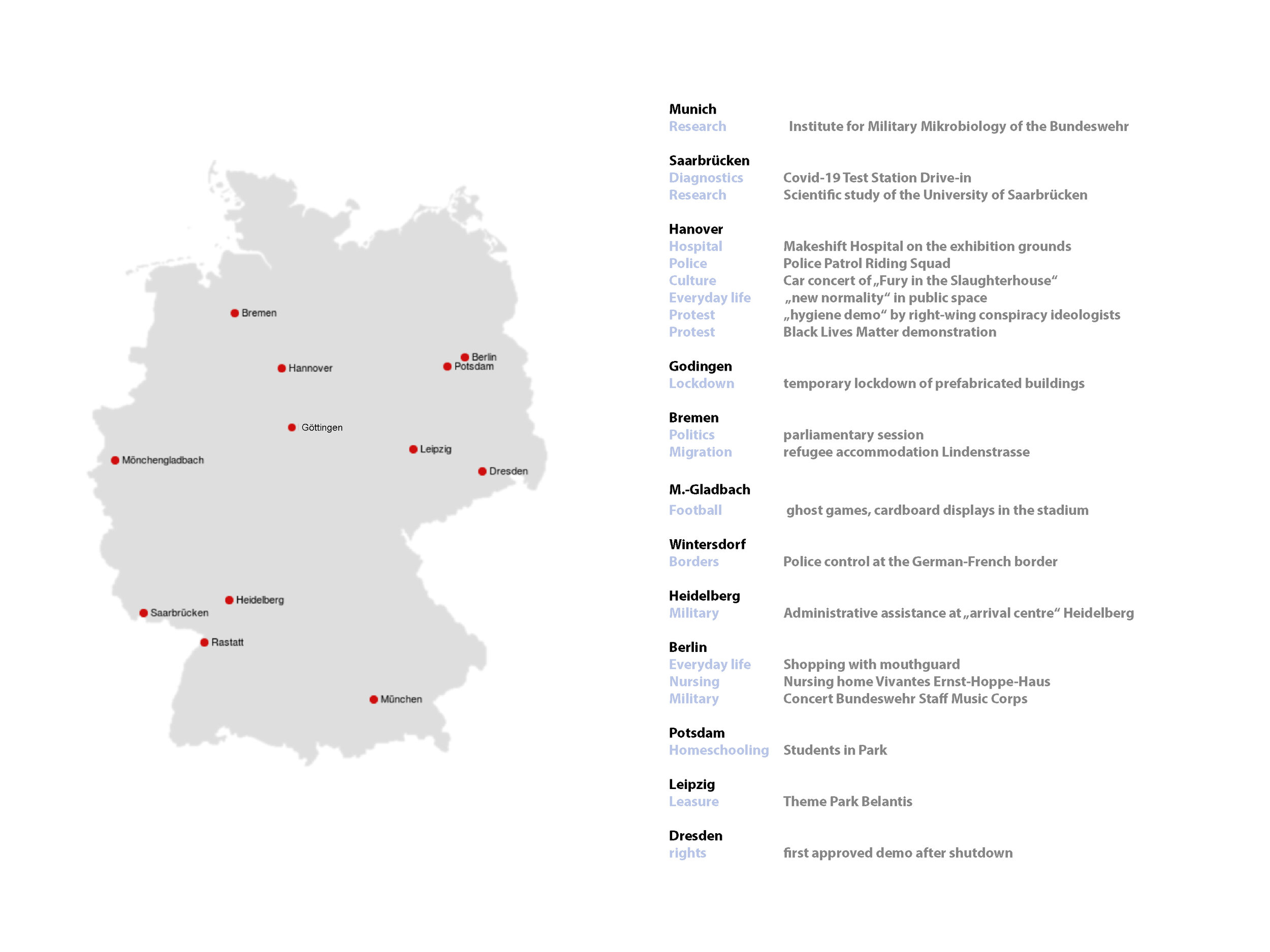![soldiers on the way to an exercise at a makeshift hospital in the exhibition halls in Hannover]()
soldiers on the way to an exercise at a makeshift hospital in the exhibition halls in Hannover
![In Hannover Exhibition Halls, a makeshifthospital has been set up in March. Where usually trade fairs take place in Hannover,treatment facilities were created for 500Covid-19 patients.Until today it still notnecessary to open the new builded infrast]()
In Hannover Exhibition Halls, a makeshifthospital has been set up in March. Where usually trade fairs take place in Hannover,treatment facilities were created for 500Covid-19 patients.Until today it still notnecessary to open the new builded infrastructure.
![Mounted policewomen disperse three young men playing football in a park. In Germany it is forbidden at the time to be in public with more than two people if you do not belong to a family living in the same household.]()
Mounted policewomen disperse three young men playing football in a park. In Germany it is forbidden at the time to be in public with more than two people if you do not belong to a family living in the same household.
![Trainee officers of the Bundeswehr practice in April in a makeshift hospital how to deal with coronapatients.]()
Trainee officers of the Bundeswehr practice in April in a makeshift hospital how to deal with coronapatients.
![Ilona W. and her husband Andreas pose for a Portrait while demonstrating at a „hygiene demo“ in Hanover together with right-wing extremist conspiracy believers against the measures to limit the spread of corona. Their protective masks read „muzzle“.]()
Ilona W. and her husband Andreas pose for a Portrait while demonstrating at a „hygiene demo“ in Hanover together with right-wing extremist conspiracybelievers against the measures to limit the spread of corona. Their protective masks read „muzzle“.
![Due to the Lockdown Corona crisis, the season opening of the largest amusement park in Central Germany has been delayed by 2 months. On 29.5.2020 Belantis can open the gates with a new hygiene and safety concept.]()
Due to the Lockdown Corona crisis, the season opening of the largest amusement park in Central Germany has been delayed by 2 months. On 29.5.2020 Belantis can open the gates with a new hygiene and safety concept.
![The Bremen parliament moved to the Exhibition Halls. The members of parliament sit now at individual tables with a distance of 1.5 m.]()
The Bremen parliament moved to the ExhibitionHalls. The members of parliament sit now at individual tables with a distance of 1.5 m.
![In the improvised parliament in Bremen, all politicians strictly adhere to the valid distance rules in order to set a positive example for the citizens, a member of parliament tells. As soon as they leave the hall, however, many of them take the dis]()
In the improvised parliament in Bremen, all politicians strictly adhere to the valid distance rules in order to set a positive example for the citizens, a member of parliament tells.As soon as they leave the hall, however, many of them take the distance rules less seriously and stand closely together in groups without mouth protection.
![The Bundeswehr Institute for Microbiology in Munich specializes in researching and combating biological warfare agents. Research into the SARS-CoV-2 virus plays an important role in the current crisis. The first German COVID-19 case was already diag]()
The Bundeswehr Institute for Microbiology in Munich specializes in researching and combating biological warfare agents.Research into the SARS-CoV-2 virus plays an important role in the current crisis. The first German COVID-19 case was already diagnosed by the Institute at the end of January2020. Since then, thousands of SARS-CoV-2 suspected cases have been tested and antibody research is continuously carried out.
![Most schools in Germany were temporarily closed due to the corona crisis. Anton, Tillmann and Jette play one morning in May in a park in Potsdam, as they have only two days a week lessons in the school building.]()
Most schools in Germany were temporarily closed due to the corona crisis.Anton, Tillmann and Jette play one morning in May in a park in Potsdam, as they have only two days a week lessons in the school building.
![In mid-June, 120 of 700 residents of a prefabricated building are infected with corona. The city bans all residents from leaving the housing complex, imposes a quarantine and puts up fences.]()
In mid-June, 120 of 700 residents of a prefabricated building are infected with corona. The city bans all residents from leaving the housing complex, imposes a quarantine and puts up fences.
![In the stadium of the football team Borussia Mönchengladbach, cardboard mates were set up as a backdrop for ghost games. Fans can upload their own photos online, these will be printed on cardboard stands and placed in the stadium. At the time of the]()
In the stadium of the football team Borussia Mönchengladbach, cardboard mates were set up as a backdrop for ghost games. Fans can upload their own photos online, thesewill be printed on cardboard stands and placed in the stadium. At the time of the photo, about 21,000 soccer fans have participated.
![Lieutenant General Martin Schelleis is the highest responsible person for the German armed forces (Streitkräftebasis der Bundeswehr). At a press conference in May he poses for a portrait after providing information on civil-military cooperation and]()
Lieutenant General Martin Schelleis is the highest responsible person for the German armed forces (Streitkräftebasis der Bundeswehr). At a press conference in May he poses for a portrait after providing information on civil-military cooperation and the related administrative assistance by the German Armed Forces in the „arrival center“, a refugee accommodation in Patrick-Henry Village (former US American housing estate) in Heidelberg in Context of Corona.About 800 refugees lived here in May 2020. Because of some residents were tested positive for Covid19, the facility was under quarantine for more than two weeks. Approximate 80 soldiers took over tasks in the refugee accommodation.
![Omar poses for a portrait. He is an activist and criticizes the conditions in the refugee shelter „Lindenstraße“ in Bremen in the context of the Corona crisis. In April 2020 about 600 refugees are accommodatedhere, with more than 150 confirmed cases]()
Omar poses for a portrait. He is an activist and criticizes the conditions in the refugee shelter „Lindenstraße“ in Bremen in the context of the Corona crisis. In April 2020 about 600 refugees are accommodatedhere, with more than 150 confirmed cases of Covid-19. Together with many residents hecriticizes that infected and healthy peoplewere quarantined together for weeks withoutany distance. After continuing protests, theoperating institution finds further shelter forthe fugitives to prevent a greater spread of thevirus. In May 2020 only 200 people are still living in the accomondation.
![The treatment places of „Area C“ in the Hanoverian makeshift hospital. Here patients could be treated who, due to the course of their illness, can no longer be cared for at homebut do not require intensive medical treatment.]()
The treatment places of „Area C“ in the Hanoverian makeshift hospital. Here patients could be treated who, due to the course of their illness, can no longer be cared for at homebut do not require intensive medical treatment.
![Since mass events are currently prohibited, the cultural industry is developing new ways of holding events. In Hanover, car concerts with up to 1200 vehicles regularly take place on the Schützenplatz. Family Hencke attends a show of the rock band „]()
Since mass events are currently prohibited, the cultural industry is developing new ways of holding events. In Hanover, car concerts with up to 1200 vehicles regularly take place on the Schützenplatz. Family Hencke attends a show of the rock band „Fury in the Slaughterhouse“. The music is transmitted by radio to the car radios.
![Yvonne B. visits a flower shop near Berlin. After the shutdown most of the shops are allowed to open again in May. What is new is that masks are compulsory inside all shops in germany.]()
Yvonne B. visits a flower shop near Berlin. After the shutdown most of the shops are allowed to open again in May. What is new is that masks are compulsory inside all shops in germany.
![A family poses for a portrait during a demonstration of conspiracy believers. The family believes that the Corona crisis is a conspiracy initiated by Bill Gates.]()
A family poses for a portrait during a demonstration of conspiracy believers. The family believes that the Corona crisis is a conspiracy initiated by Bill Gates.
![The Koćić family poses for a portait in their room in a refugee shelter. They live with five people in a room whose walls do not reach the ceiling in the refugee accomondation Lindenstrasse“. In April, 150 of 600 residents were infected here at the]()
The Koćić family poses for a portait in their room in a refugee shelter. They live with five people in a room whose walls do not reach the ceiling in the refugee accomondation Lindenstrasse“.In April, 150 of 600 residents were infected here at the same time. Healthy and infected people were quarantined together for weeks,which led to protests.
![Candidate officers of the German Armed Forces who are studying medicine work out emergency procedures in the makeshift hospital on the Hanover exhibition grounds.]()
Candidate officers of the German Armed Forces who are studying medicine work out emergency procedures in the makeshift hospitalon the Hanover exhibition grounds.
![Hasan A. is a cleaner in a refugee shelter and poses in his work clothes in the corridor for a portrait.]()
Hasan A. is a cleaner in a refugee shelter and poses in his work clothes in the corridor for a portrait.
![Police officers control the German-French border crossing in Wintersdorf in May. Every day about 1300 cars cross the border crossing, most of them commuters. At this time, only about 5 vehicles per day have to turn back.]()
Police officers control the German-French border crossing in Wintersdorf in May. Every day about 1300 cars cross the border crossing, most of them commuters. At this time, only about 5 vehicles per day have to turn back.
![At car concerts in Hannover it is forbidden to leave the vehicle during the show. Instead of clapping, there is honking and flashing after each song.]()
At car concerts in Hannover it is forbidden to leave the vehicle during the show. Instead of clapping, there is honking and flashing after each song.
![Members of the Supporters Club Mönchengladbach prepare new „cardboard comrades“ in time before the first football ghost-game in their stadium after the lockdown.]()
Members of the Supporters Club Mönchengladbach prepare new „cardboard comrades“ in time before the first football ghost-game in their stadium after the lockdown.
![Researchers Tobias G. and Mayur J. are investigating at the Covid-19 drive-in test station at the Saarbrücken Exhibition Centre to determine whether Covid-19 symptoms can also be detected without contact. After people have been gestured by a doctor]()
Researchers Tobias G. and Mayur J. are investigating at the Covid-19 drive-in test station at the Saarbrücken Exhibition Centre to determine whether Covid-19 symptoms can also be detected without contact. After people have been gestured by a doctor, the scientists ask them to participate in their study.
![Using thermal imaging and colour cameras, microphones and computer science methods, the researchers are investigating whether Covid-19 infected people have similarities in terms of body temperature, changes in facial movements, breathing sounds and]()
Using thermal imaging and colour cameras, microphones and computer science methods, the researchers are investigating whether Covid-19 infected people have similarities in terms of body temperature, changes in facial movements, breathing sounds and the sound of the voice.
![City councillors are waiting for the end of an interview with their Minister of the Interior, Thomas Strobel, at a press event on the administrative assistance of the German Armed Forces at the “arrival centre” in Heidelberg.]()
City councillors are waiting for the end of an interview with their Minister of the Interior, Thomas Strobel, at a press event on the administrative assistance of the German Armed Forces at the “arrival centre” in Heidelberg.
![Soldier Adriana Helfen poses for a portrait. She is a medical-technicallaboratory assistant at the Institute forMicrobiology of the German Armed Forcesin Munich. She wears a protective suit withwhich the soldiers in the high-security laboratoryprote]()
Soldier Adriana Helfen poses for a portrait. She is a medical-technicallaboratory assistant at the Institute forMicrobiology of the German Armed Forcesin Munich. She wears a protective suit withwhich the soldiers in the high-security laboratoryprotect themselves in direct contact with the corona virus during their research.
![Policewomen of the equestrian squad pose for a portrait during their patrol at the Maschseein Hanover, on the day when masks arecompulsory in Germany.]()
Policewomen of the equestrian squad pose for a portrait during their patrol at the Maschseein Hanover, on the day when masks arecompulsory in Germany.
![Lieutenant Colonel Dillschneider, head of the information work of the Saarland State Command, poses for a portrait in the Covid-19 test station at the old fairground in Saarbrücken.]()
Lieutenant Colonel Dillschneider, head of the information work of the Saarland State Command, poses for a portrait in the Covid-19 test station at the old fairground in Saarbrücken.
![A bed in a makeshift hospital in Hannover. Despite high case numbers, the health system in Germany has not collapsed.]()
A bed in a makeshift hospital in Hannover. Despite high case numbers, the health system in Germany has not collapsed.
